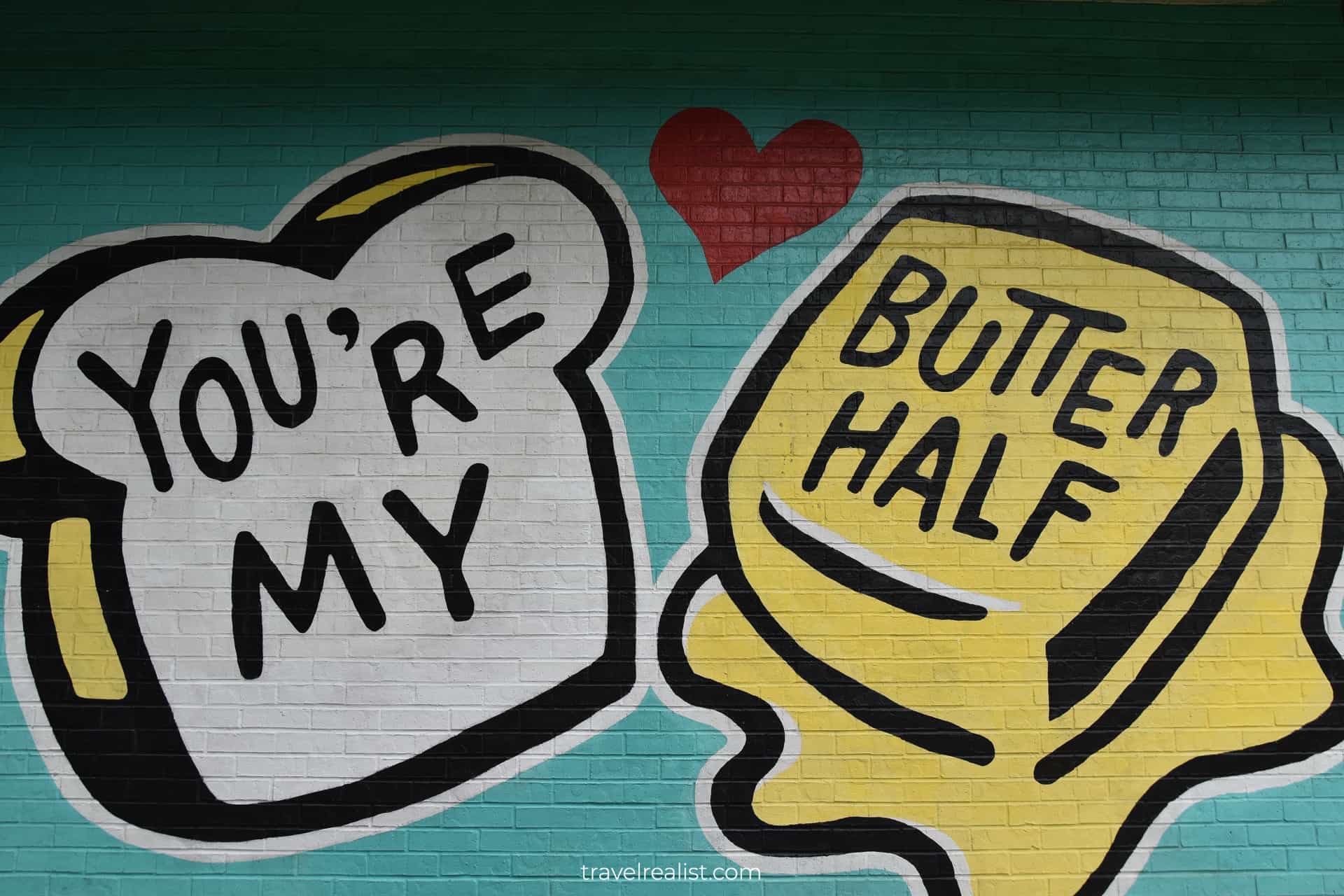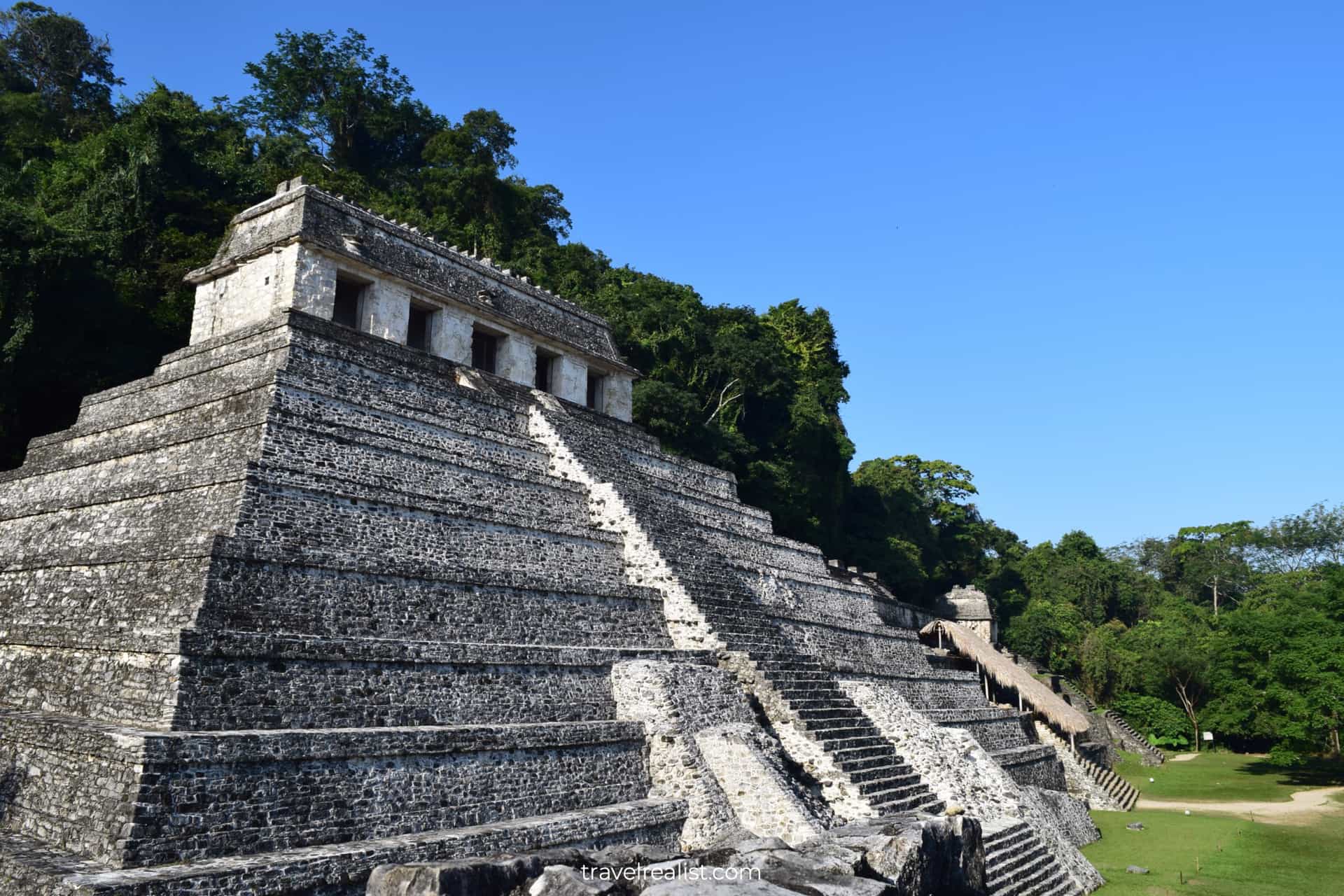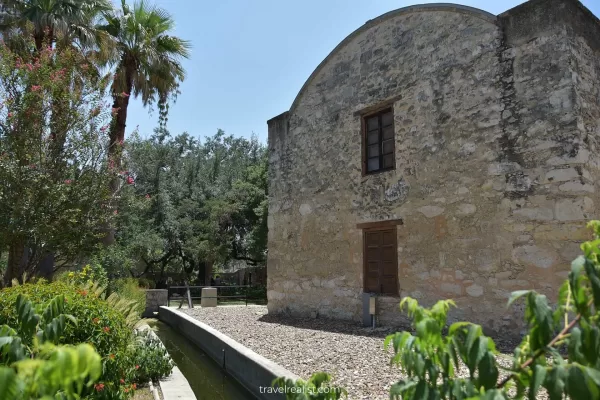12 Best Cherry Blossom Spots in Washington, D.C.
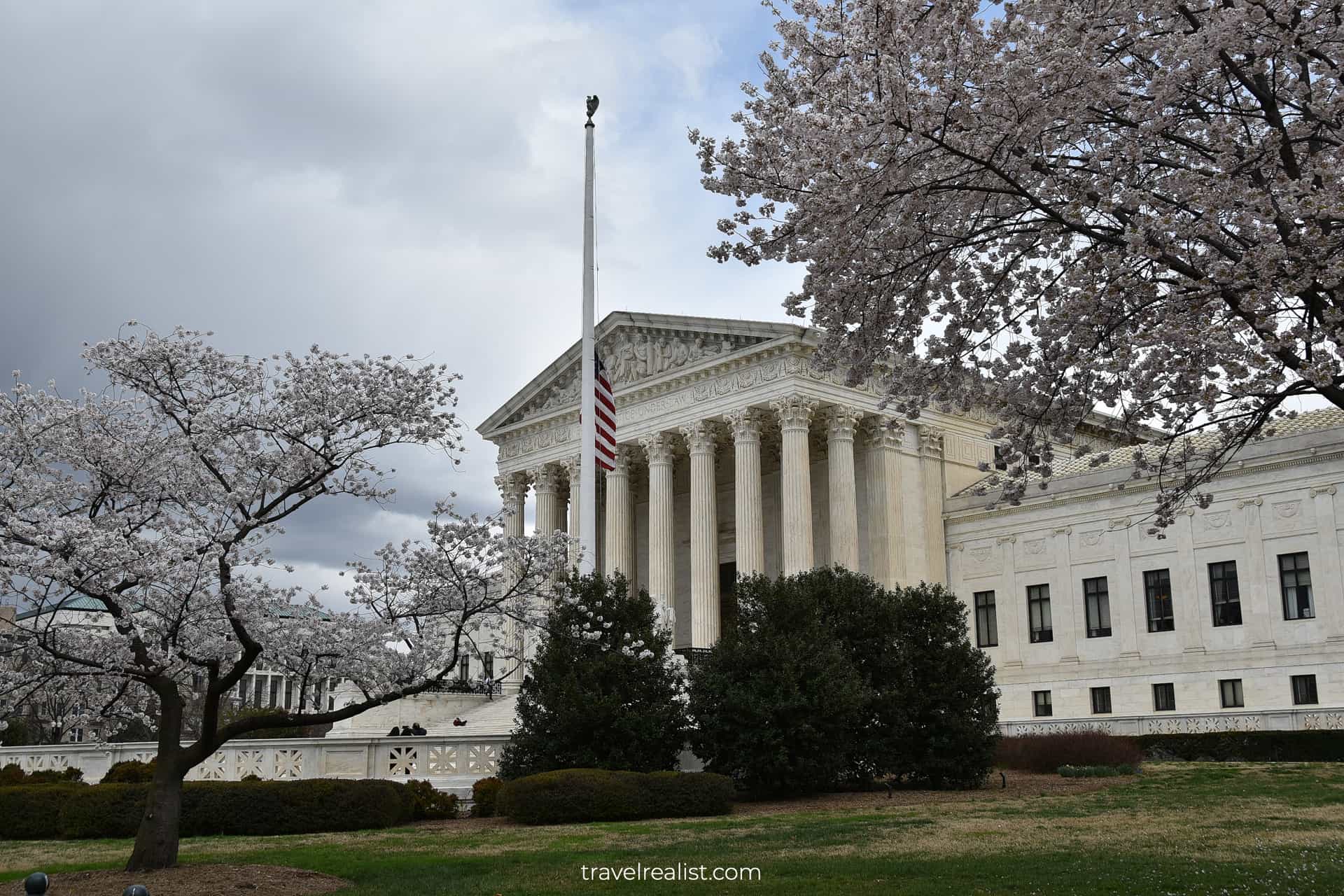
This realistic Cherry Blossom Spots DC Guide helps you plan your next spring blossom trip to the capital city.
Japanese cherry trees have become a symbol of Washington, D.C. over the past 100 years. White and pink blooming trees and a festival to celebrate them attract 1.5 million people every year.
- 1. Tidal Basin
- 2. Floral Park
- 3. Thomas Jefferson Memorial
- 4. Inlet Bridge
- 5. Japanese Pagoda
- 6. MLK Memorial
- 7. Washington Monument
- 8. Bartholdi Fountain and Gardens
- 9. United States Capitol
- 10. Library of Congress
- 11. Supreme Court
- 12. Lower Senate Park
- Getting to Cherry Blossom Spots in D.C.
- Where to Stay near Cherry Blossom Spots
- Entrance Requirements & Passes
- Takeaways: Cherry Blossom Spots in Washington, D.C.
This post includes affiliate links that will earn us commission if you make a purchase via these links.
It is hard to believe but there were few cherry trees in D.C. some 115 years ago. The first cherry blossom trees arrived in Washington from Japan in 1912. It was a gift of friendship between the two countries.
Two sakura trees were planted on March 27, 1912 on the northern shore of the Tidal Basin. Over 3,000 trees followed afterwards. These trees cover the city in a sea of white and pink flowers every March.
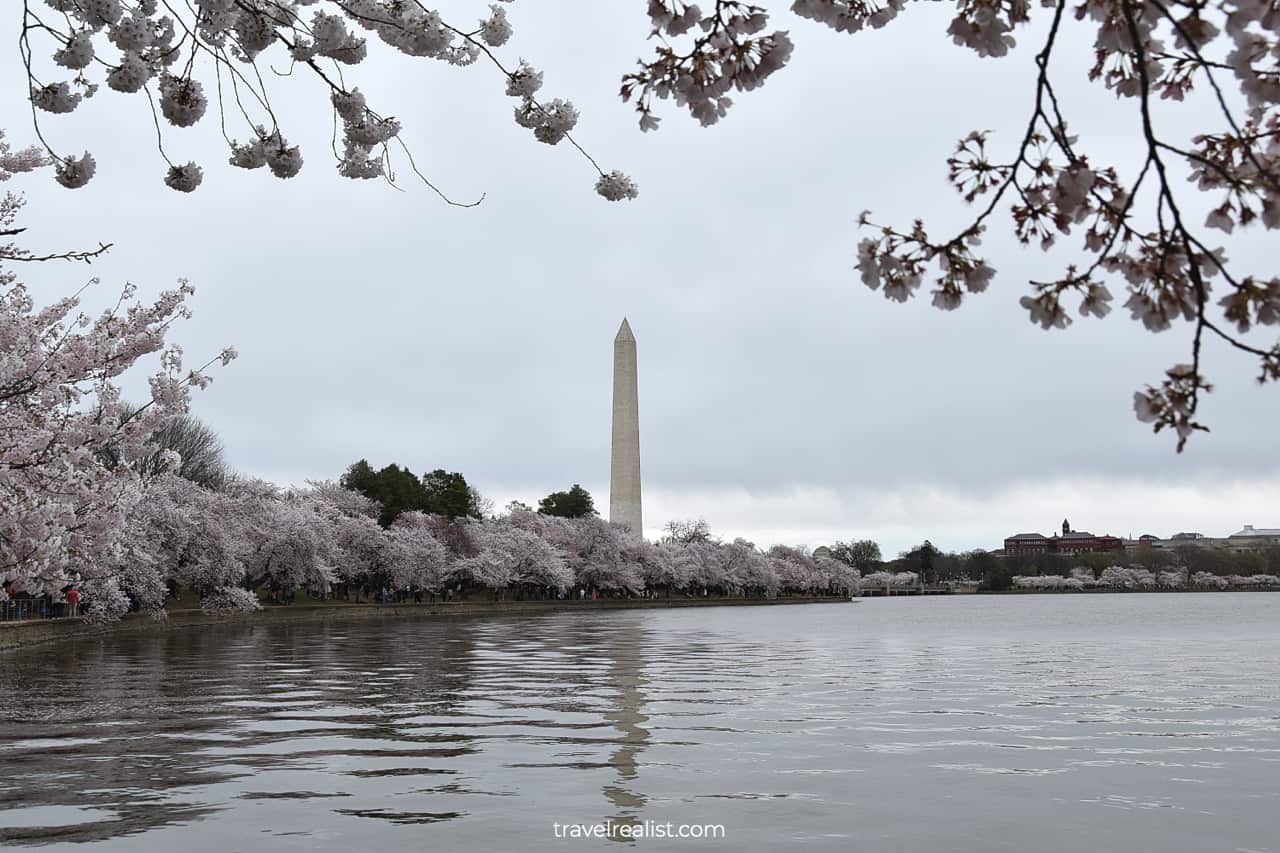
Japanese sakura trees also created an annual tradition. The National Cherry Blossom Festival takes place in Washington, D.C. between mid March and mid April.
The festival has attracted visitors to the capital since 1934. You should expect crowds at most cherry blossom viewing spots and the National Mall sights.
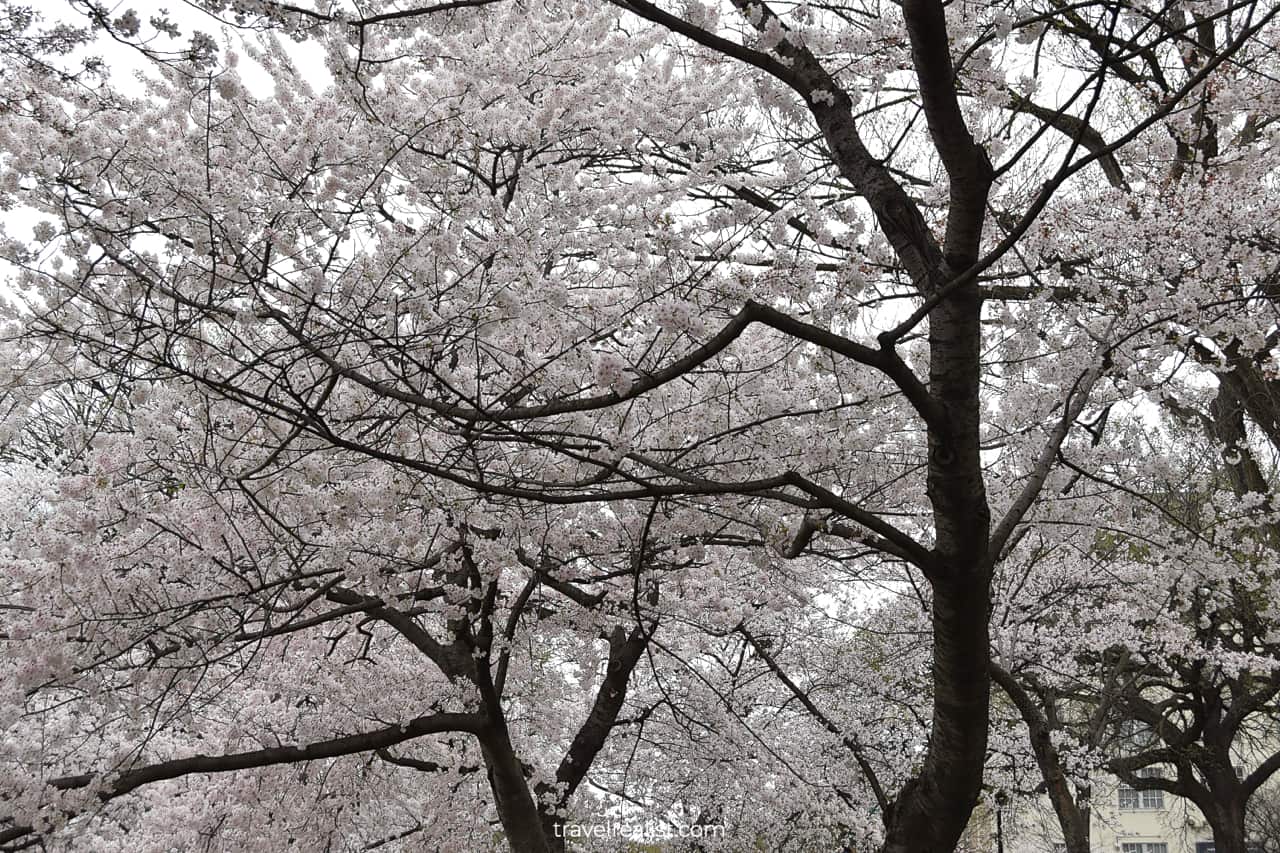
1. Tidal Basin
There could be only one answer if you are looking for the top cherry blossom spot in Washington, D.C. Without any doubt, you need to head to the Tidal Basin.
In the end, it is the place where the first Japanese sakura trees were planted in 1912. A few thousand trees created a large grove of cherry blossom trees on the Tidal Basin shores.
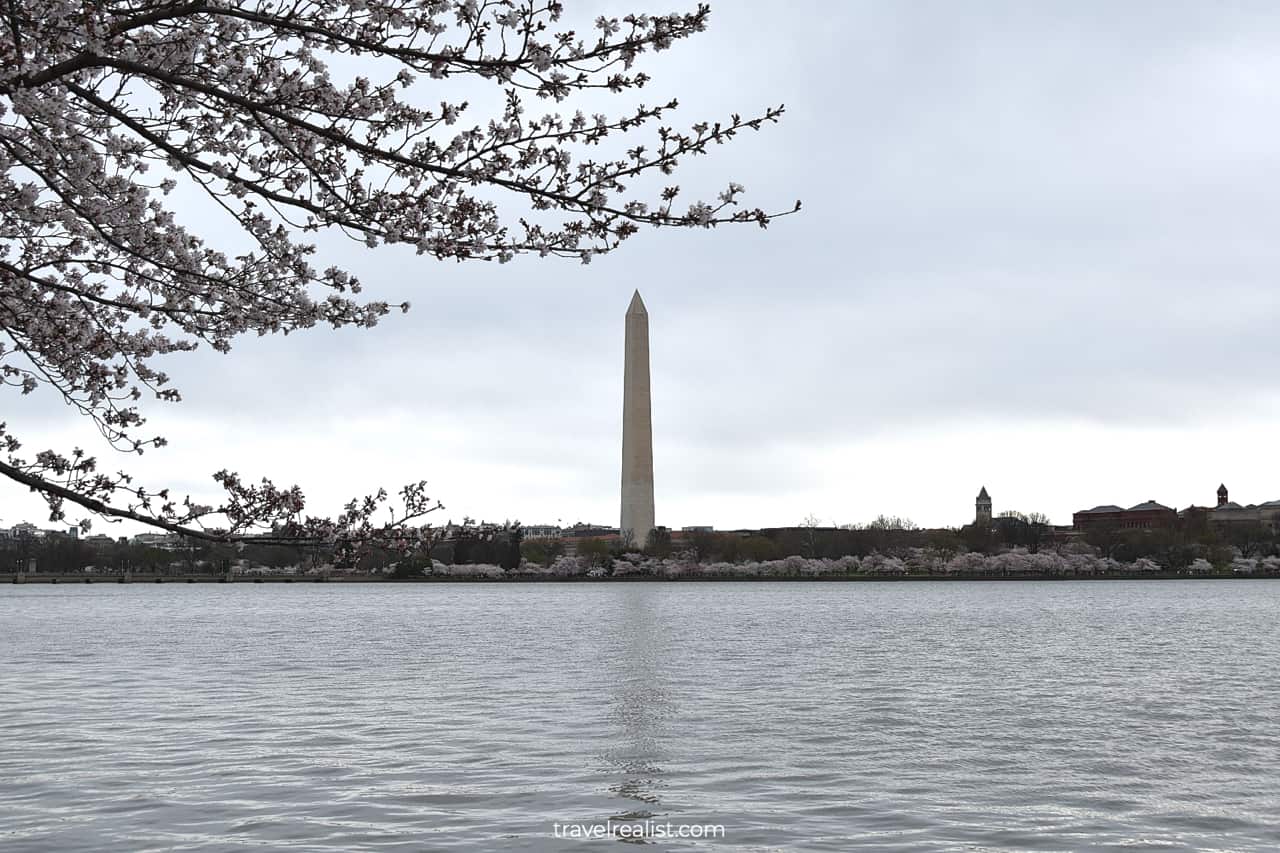
It is difficult to compete with the Tidal Basin in the number and beauty of the cherry blossom trees. But large visitor crowds could make your exploration of this area far from enjoyable.
As a result, many locals and visitors started looking for other spots to enjoy cherry blossom in Washington, D.C. Thankfully, you do not need to travel far to see blooming cherry trees in the capital.
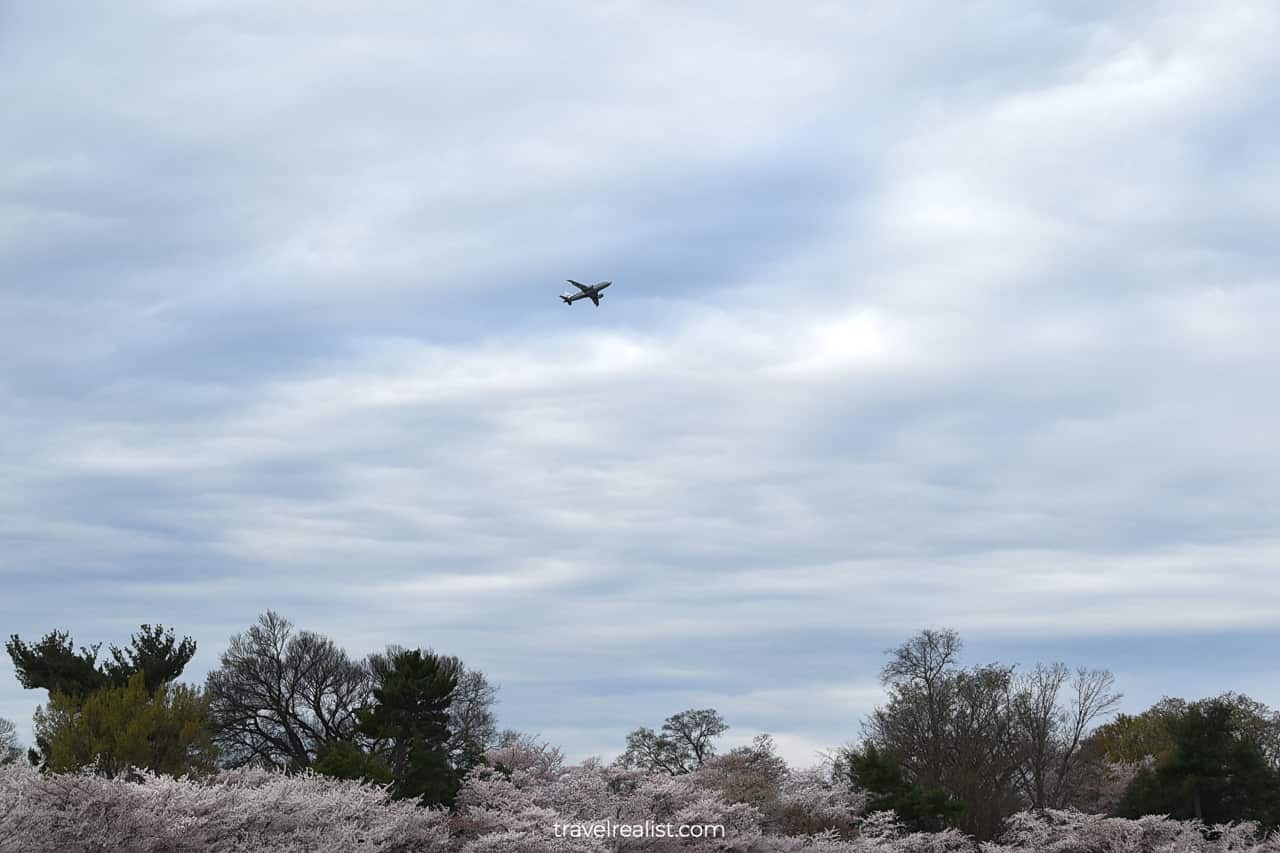
2. Floral Park
Before venturing on a quest for other cherry blossom D.C. spots, try making the most of your Tidal Basin visit. Floral Park off Maine Avenue is the easiest to reach place with cherry trees.
You could get to this park from Smithsonian station in about 15 minutes. A walk from the Washington Monument is less than 10 minutes. Such a short distance from the main sights is a recipe for crowds.
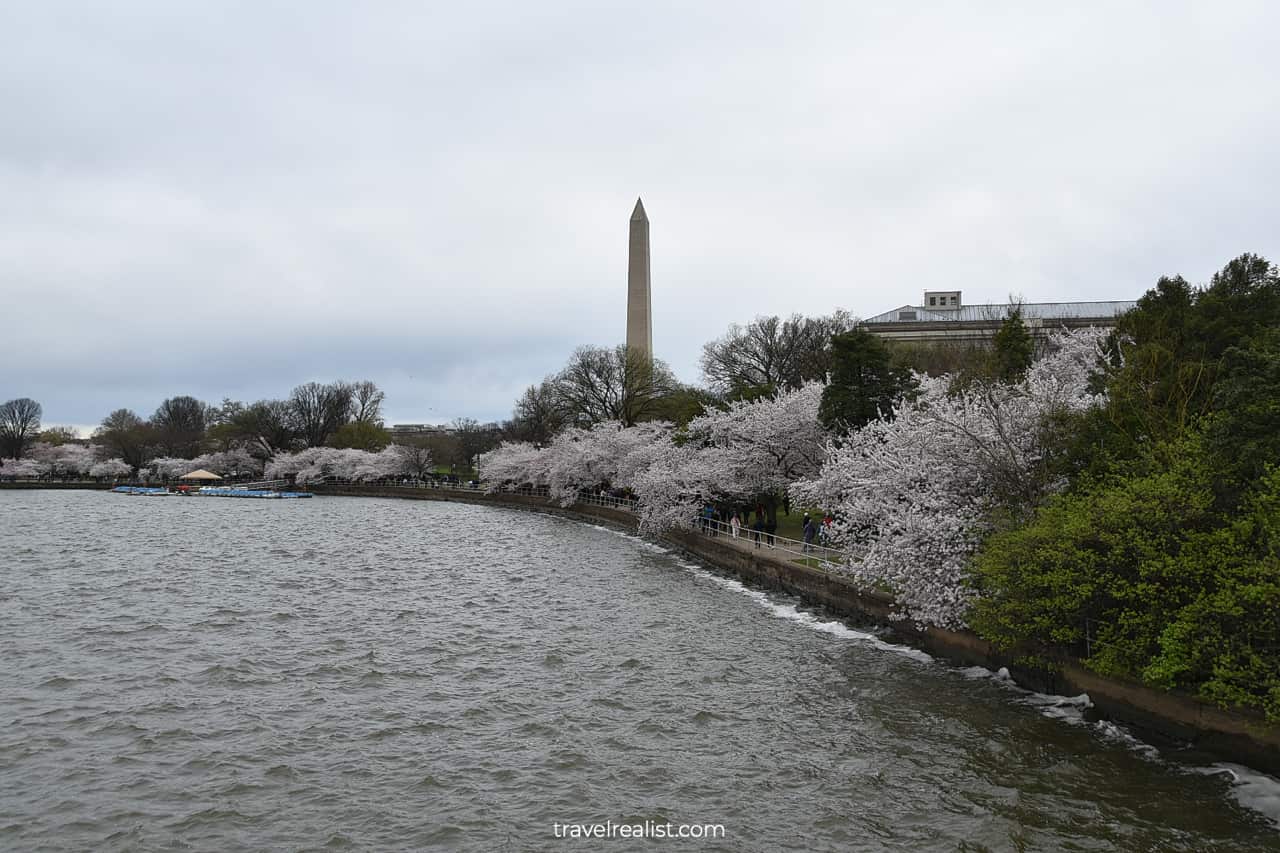
Floral Park could be your gateway to cherry blossom in Washington, D.C. But it is best to pass this area as soon as possible. Try getting to the most beautiful spots before the crowds arrive.
A quick walk through Floral Park still means that you could enjoy the views. Some of the trees grow so close to the ground that you could smell their blossoms. You should not pass on this opportunity.
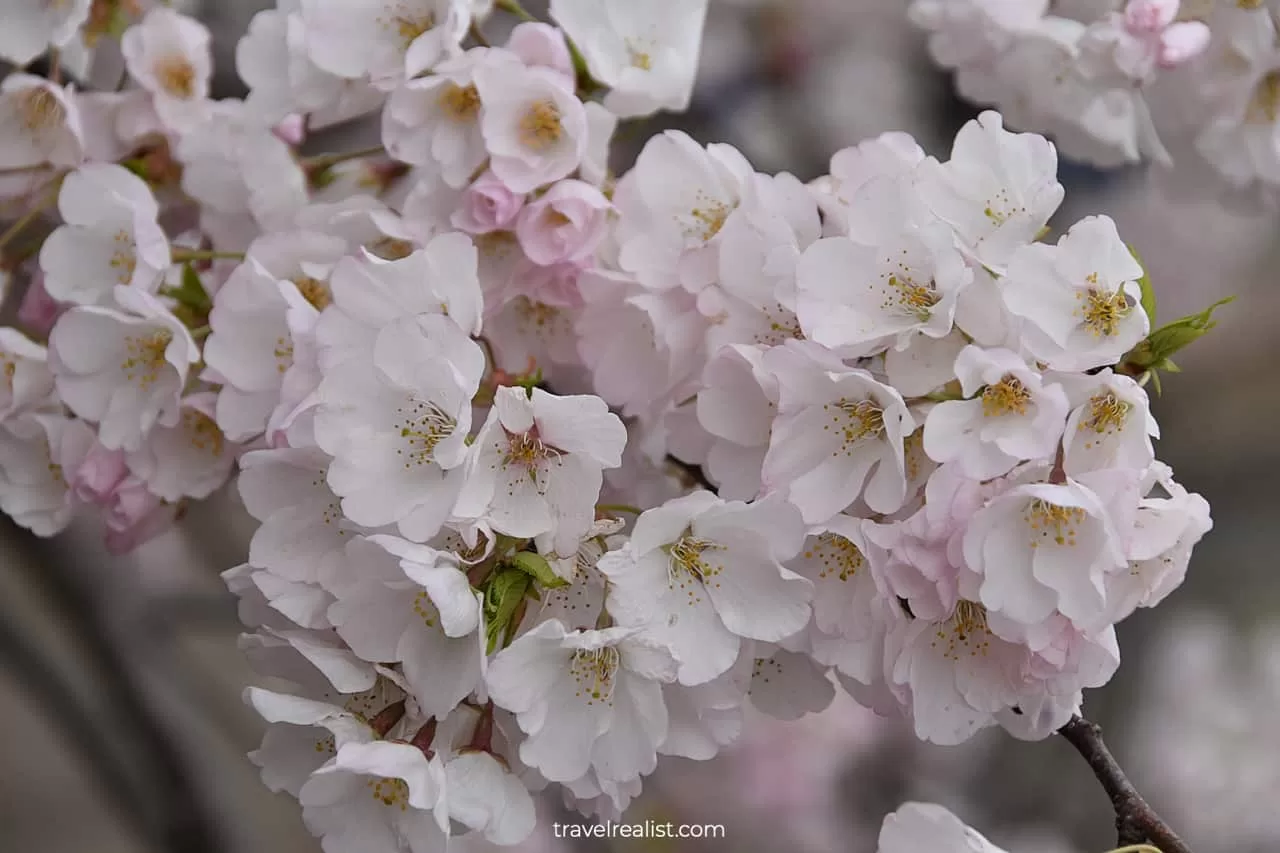
3. Thomas Jefferson Memorial
You should take a clockwise path around the Tidal Basin. It is a longer but a more scenic route that will bring you to all the main cherry blossom spots.
You could set the Thomas Jefferson Memorial as your destination. This Classical Revival structure is easy to spot from nearly every part of the Tidal Basin. This way, you will not get lost on your walk.
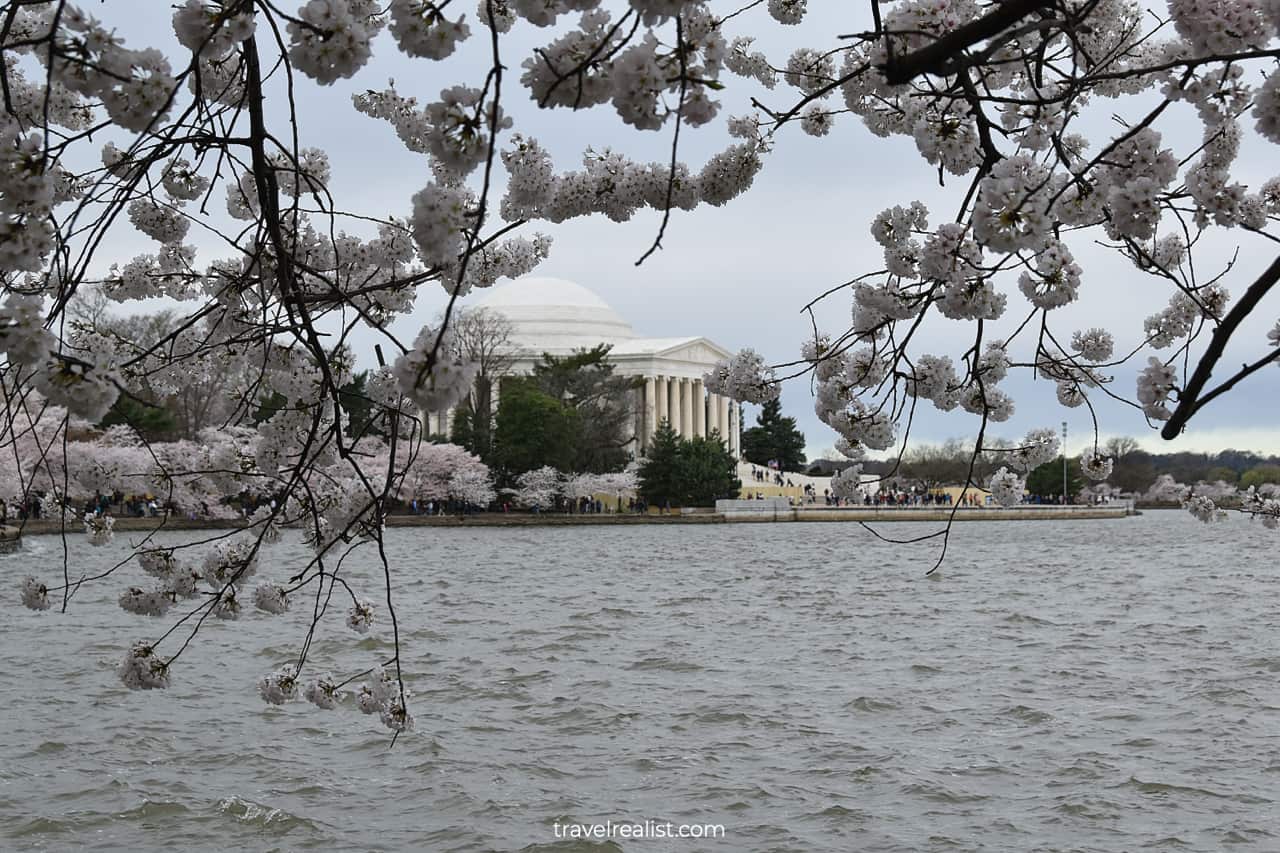
The former Bathing Beach is a nice spot to see cherry blossom. You will find a lot of colorful trees in that area. Look for trees with pink blossoms. They are far less common at the Tidal Basin than the white ones.
Once you reach the Memorial building, you will see that there are very few trees in front of it. In fact, the Memorial has a complicated history with the Japanese cherry trees.
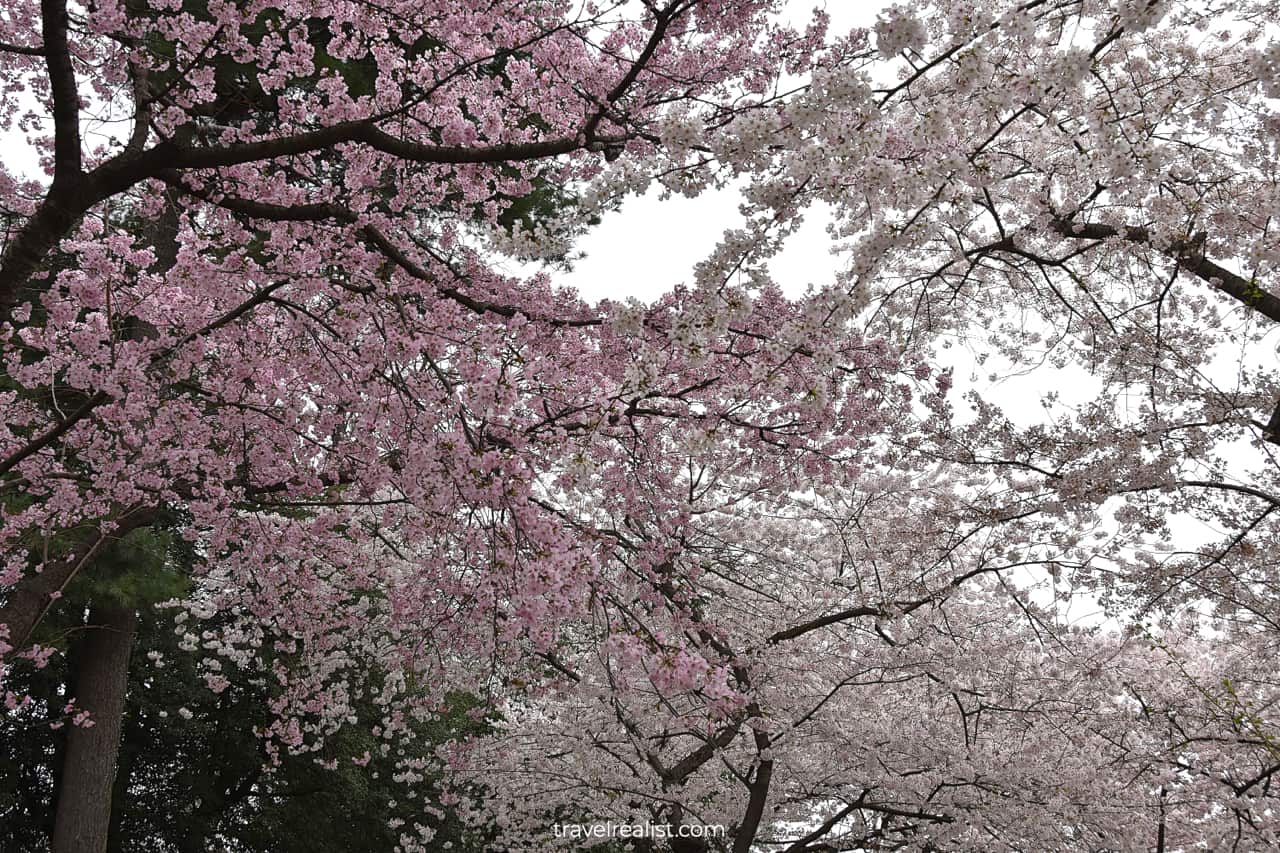
A few trees were spared for its construction in the late 1930s. This decision even sparked protests among the locals. More trees were planted instead.
A handful of trees suffered damage during a recent flood. You could see younger trees in their place. It will take them a few years to reach the height of their predecessors.
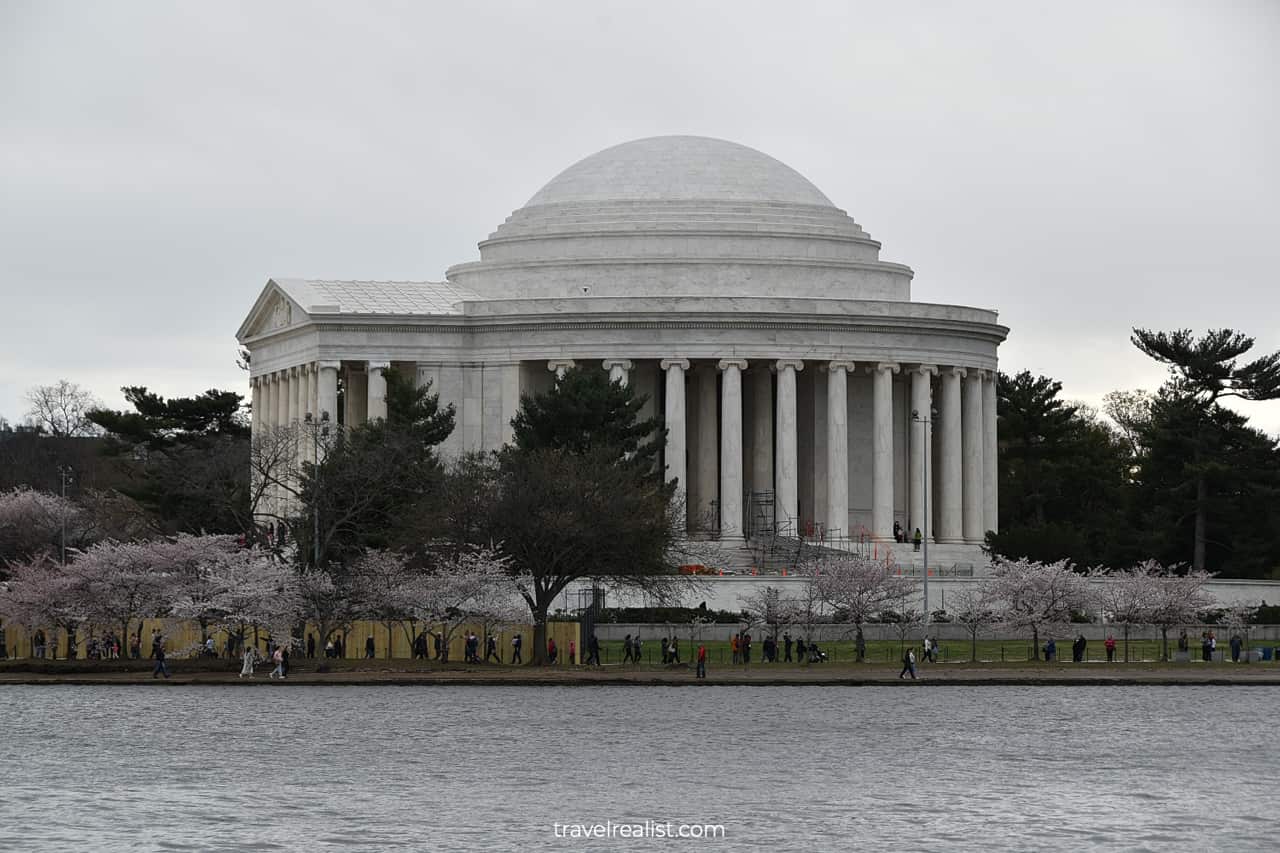
4. Inlet Bridge
The Inlet Bridge, or the Ohio Drive Bridge, is another great spot to see cherry blossom in Washington, D.C. Cherry trees are on both shores that this bridge connects.
The main Japanese sakura alley at the Tidal Basin starts right after the Bridge. They continue from West Potomac Park Sport Fields all the way to the Kutz Bridge.
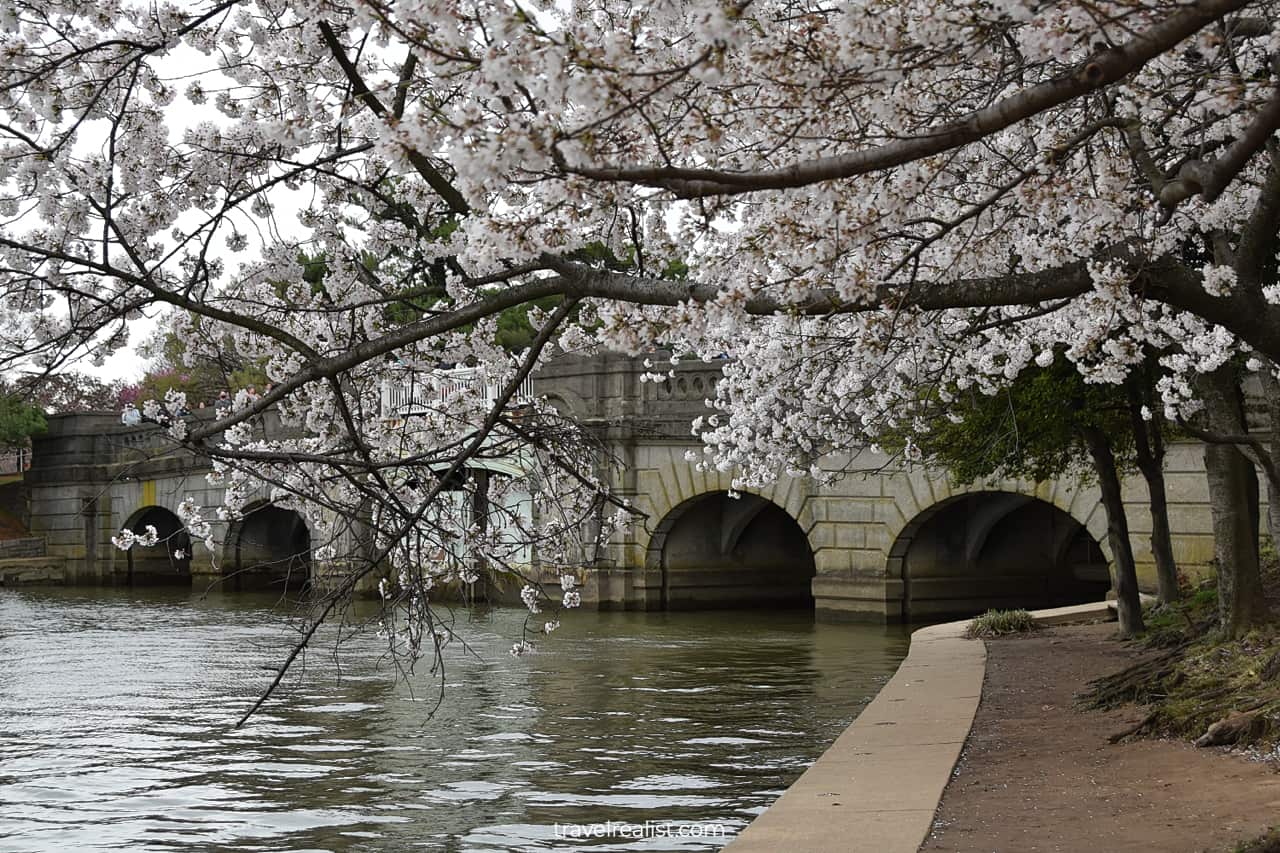
There are two cherry trees with massive blossoms at Basin Drive. The blossoms are so large that they often cover light poles and road signs. These cherry blossoms are a great background for your pictures.
There are just a few things to consider. These cherry blossom trees are quite old and tall. They are also right next to a road and a narrow walkway. You might not enjoy taking phots next to cars and crowds.
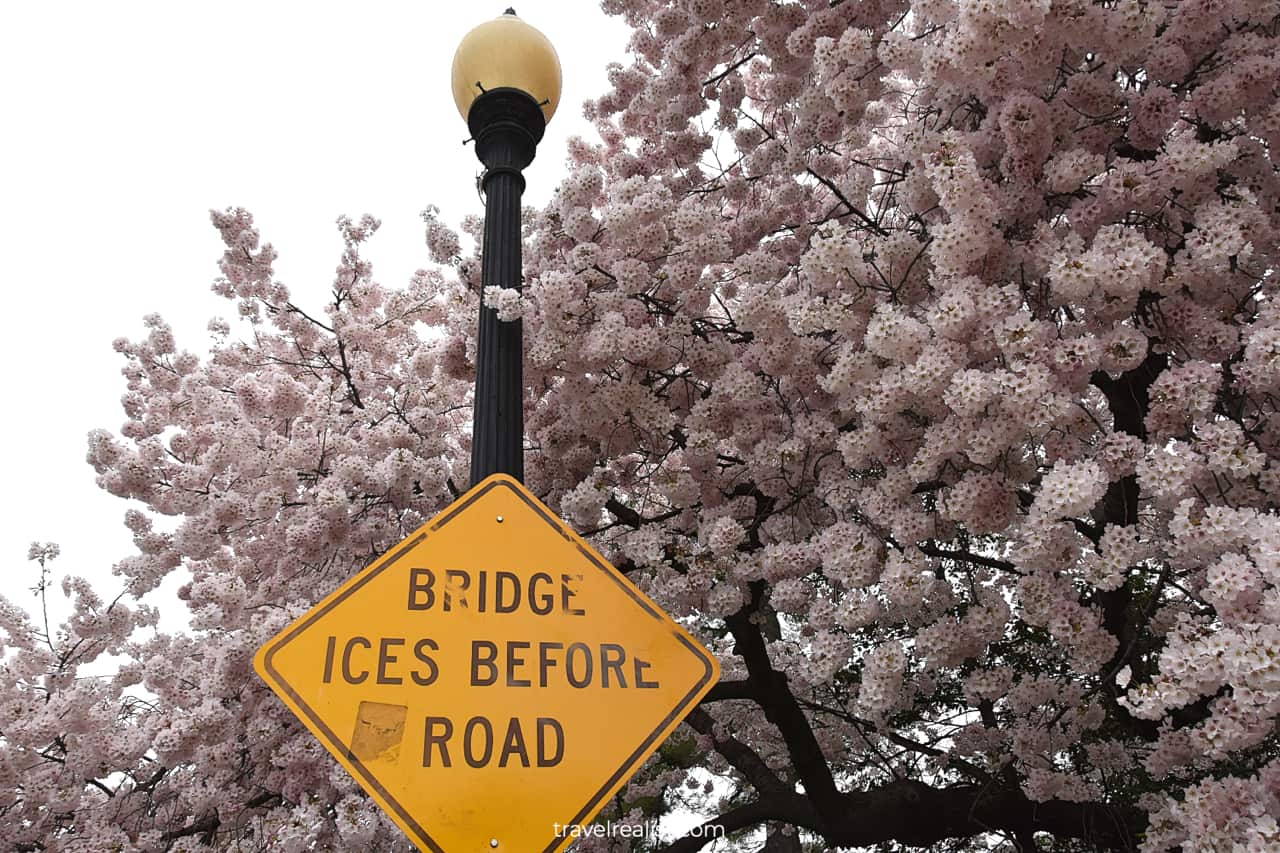
Yet, this area has more than cherry trees. You could find pink magnolia trees and yellow forsythia shrub. These colorful blossoms would steal the show in other parks like Grey Towers and Vanderbilt Mansion.
But this is not the case in Washington, D.C. during the National Cherry Blossom Festival. Most visitors would not even stop near the blooming magnolia trees.
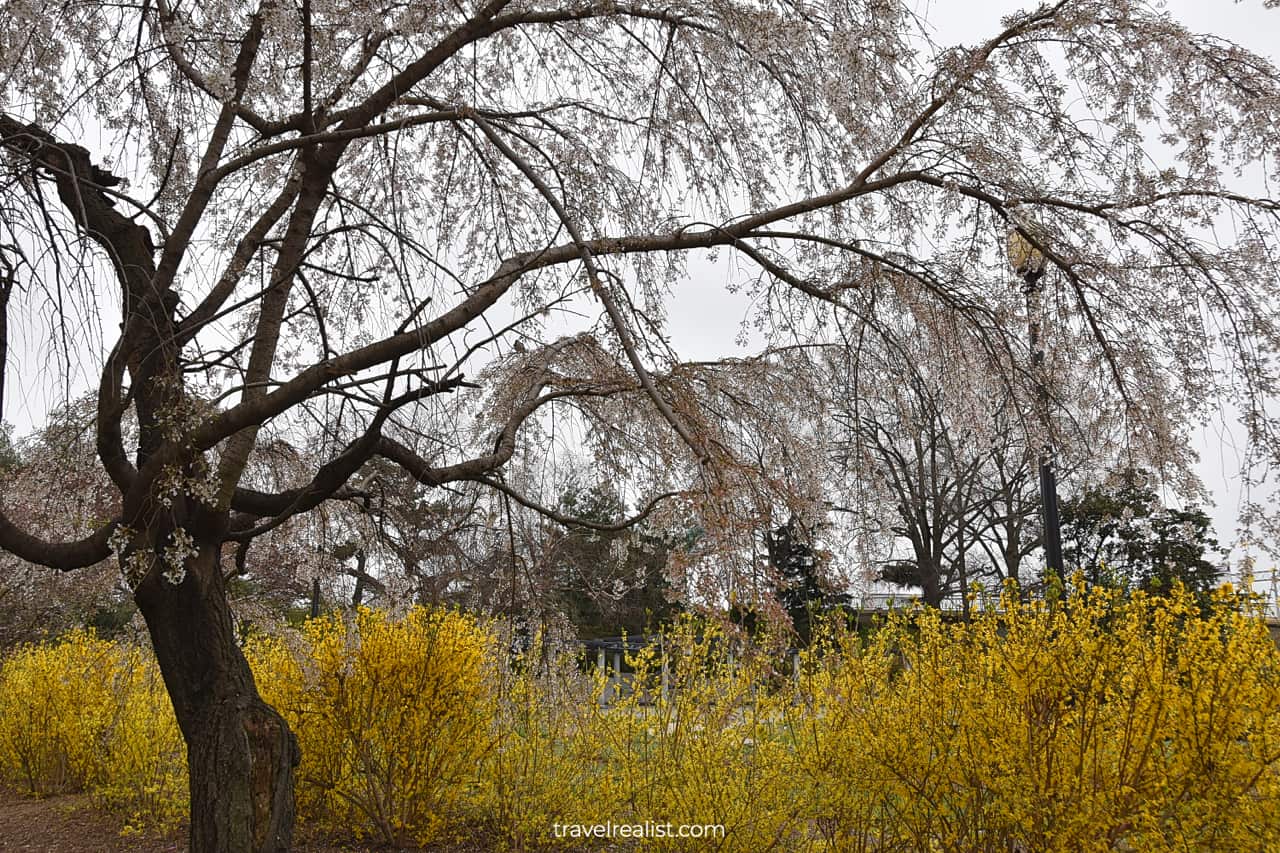
5. Japanese Pagoda
Once you cross the Ohio Drive Bridge, you will enter the most colorful part of the Tidal Basin. There is a good reason. Most Japanese cherry trees are between the Japanese Pagoda and the Japanese Lantern.
Locals and visitors to the capital know about this spot. In the end, it is even marked on the map of the National Mall. You should expect to see crowds here all day long during the cherry blossom season.
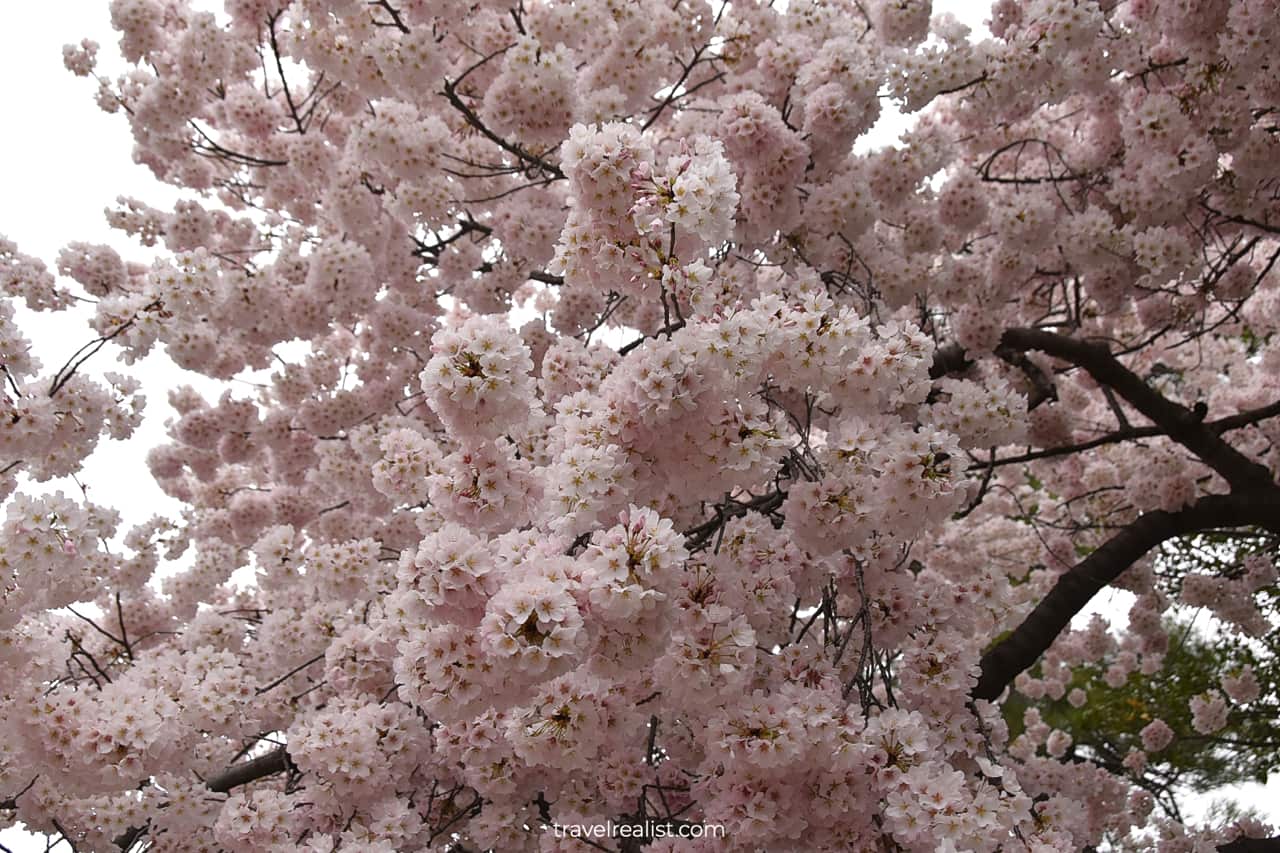
It is a good idea to head to the Tidal Basin early. While you will not be enjoying the cherry blossom trees alone, there will be far fewer people. Wait a few hours and there will no open spots near the trees.
The Japanese Pagoda is a great place to see the Washington Monument covered with cherry blossoms. You could test different views. Let your imagination be the only limit.
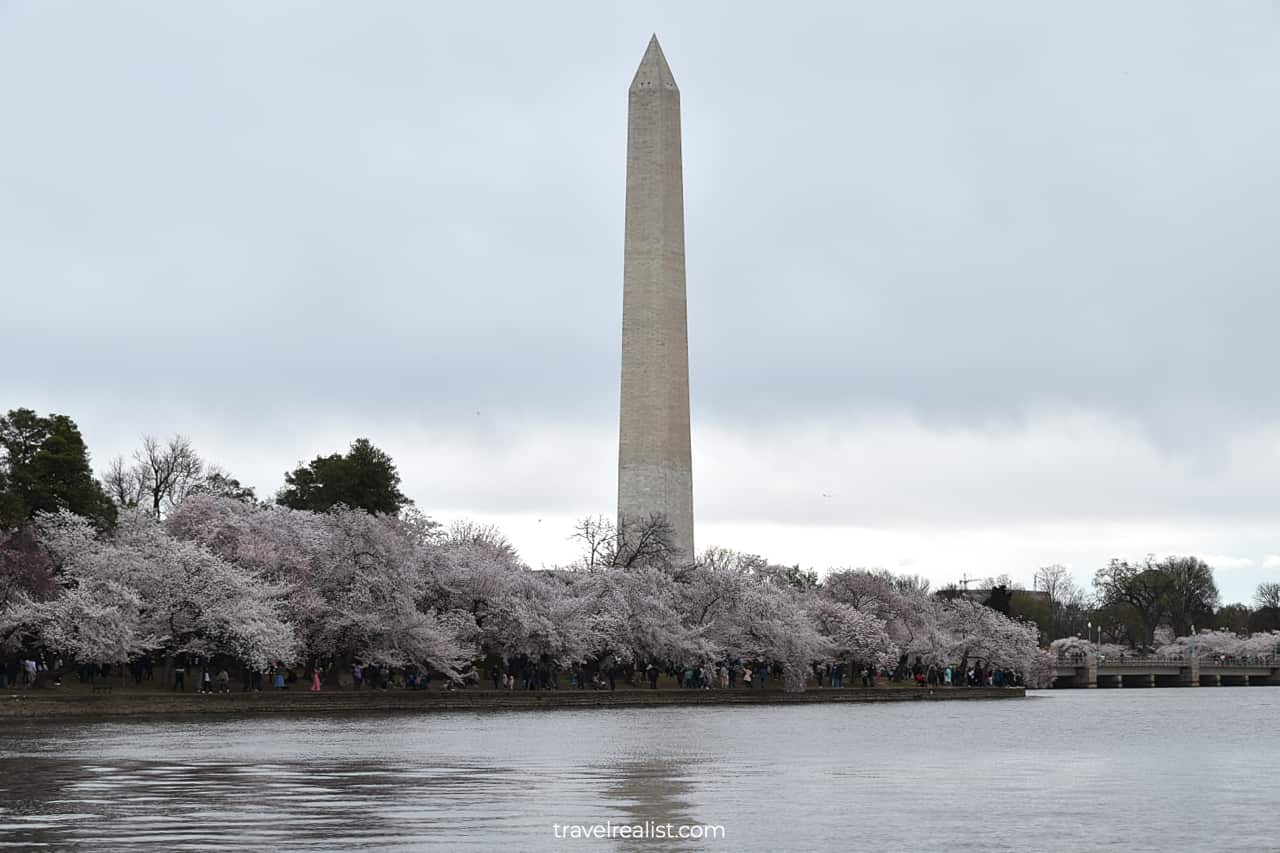
6. MLK Memorial
Continue along the shore of the Tidal Basin to the MLK Memorial. The area around the Memorial is a great spot to see cherry blossom in Washington, D.C.
When the trees are in full bloom, you could barely see daylight. Long branches with large flowers create a blossom tunnel. A walk through this tunnel is a highlight of the cherry blossom season.
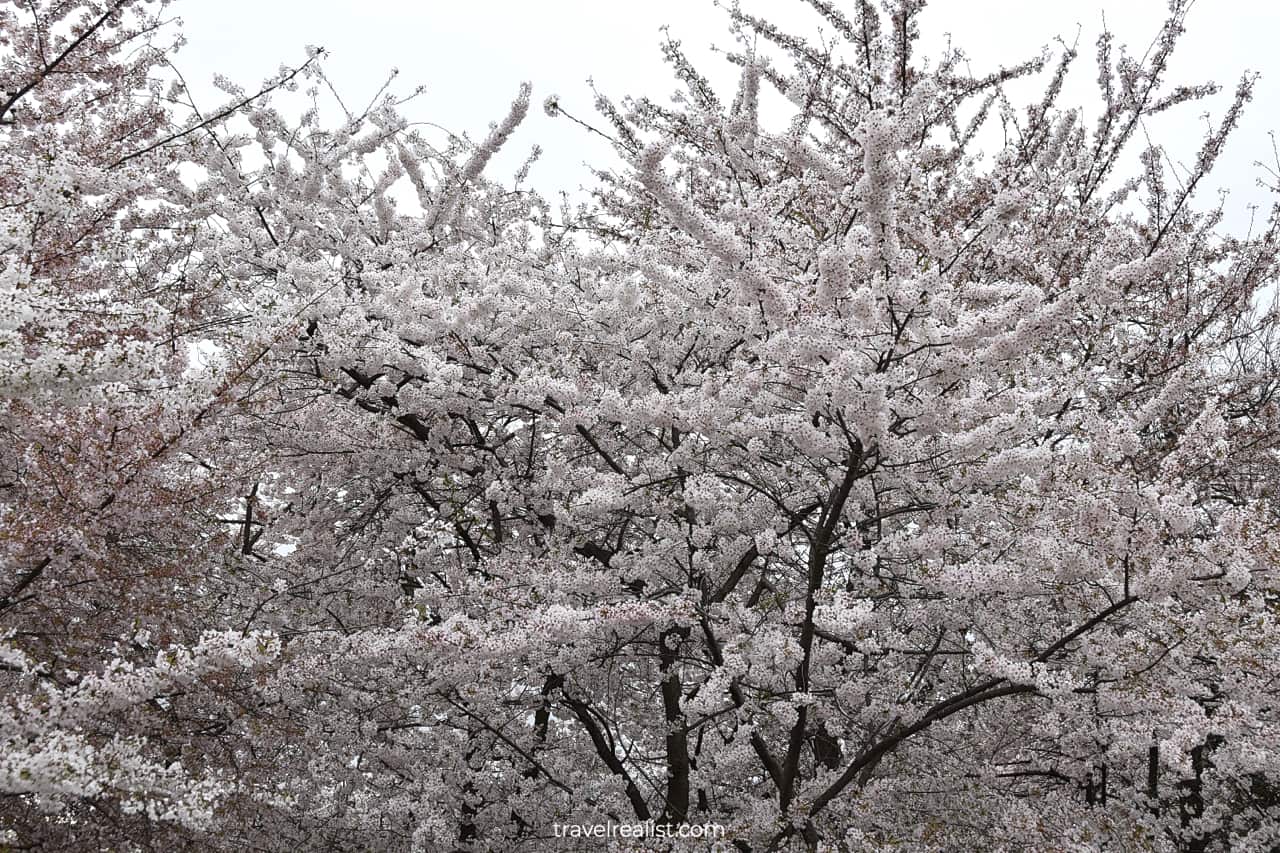
You will arrive at the Japanese lantern if you keep walking along Independence Avenue for another 0.2 miles (0.3 km). The lantern marks the spot of the very first Japanese sakura trees in Washington, D.C.
Most cherry blossom trees live between 15 and 25 years. A few trees have grown for over 40 years. So, do not expect to see the original Japanese cherry trees. Other trees of a similar variety took their place.
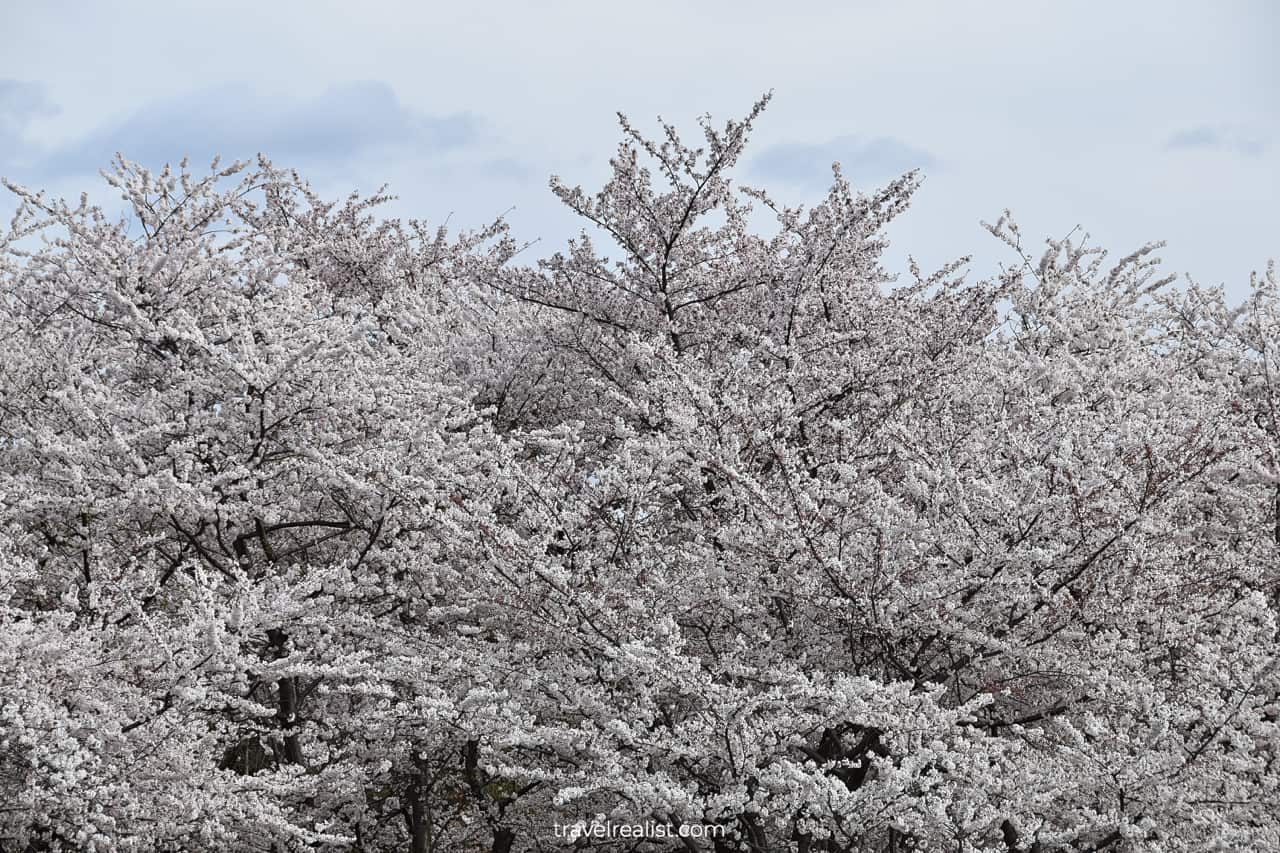
You should skip Lincoln Memorial if cherry blossom trees are the main reason for your visit. It is hardly a spot to see cherry blossom in Washington, D.C.
The Reflecting Pool is still captivating. But do not expect blooming trees, shrubs, or flowers around it. A similar description could fit the Washington Monument. But you might still want to head there next.
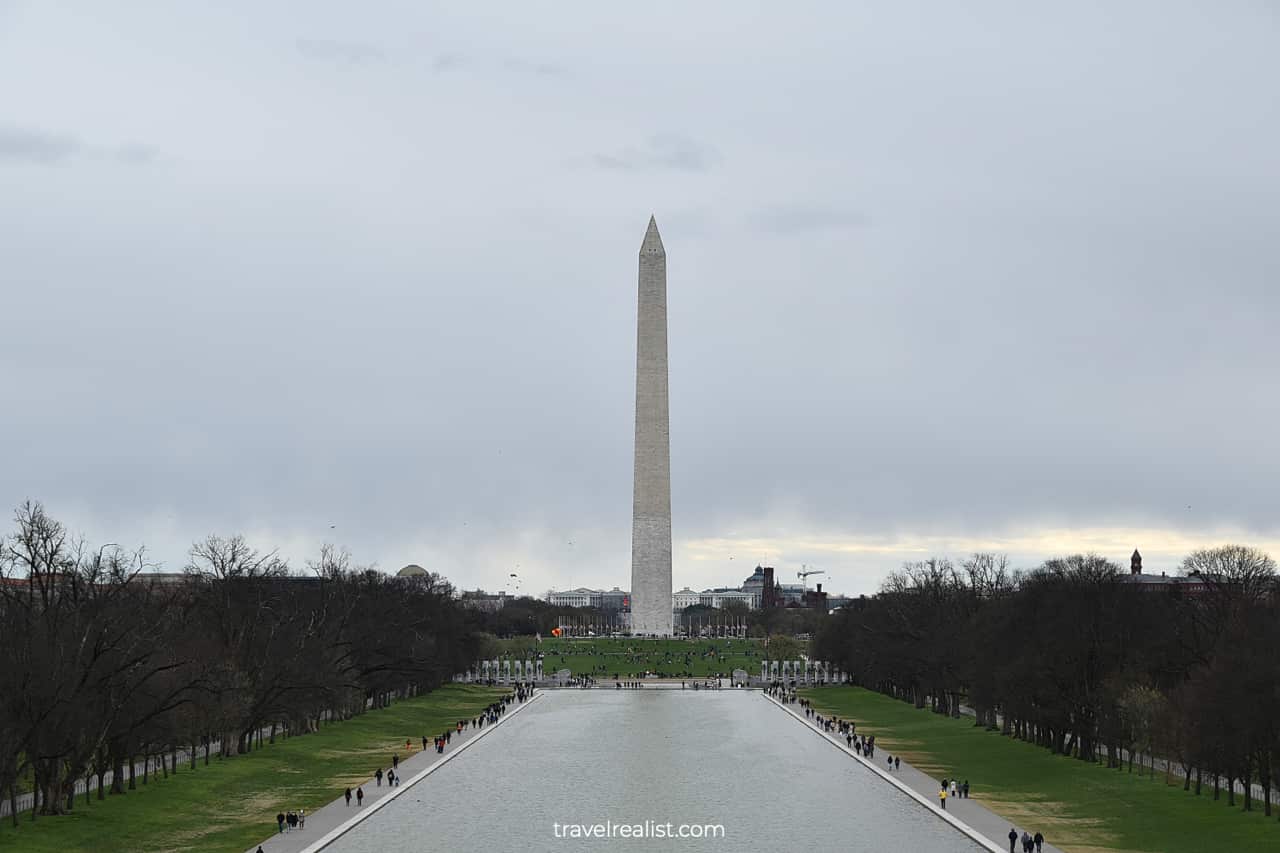
7. Washington Monument
Few people would think of the Washington Monument as a great spot to see cherry blossom in Washington, D.C. If you ever visited the Monument, you know the reason all too well.
The Washington Monument grounds are a large lawn. There are no trees on most of the lawn. How would you see cherry blossoms if there are no trees? It is a great question.
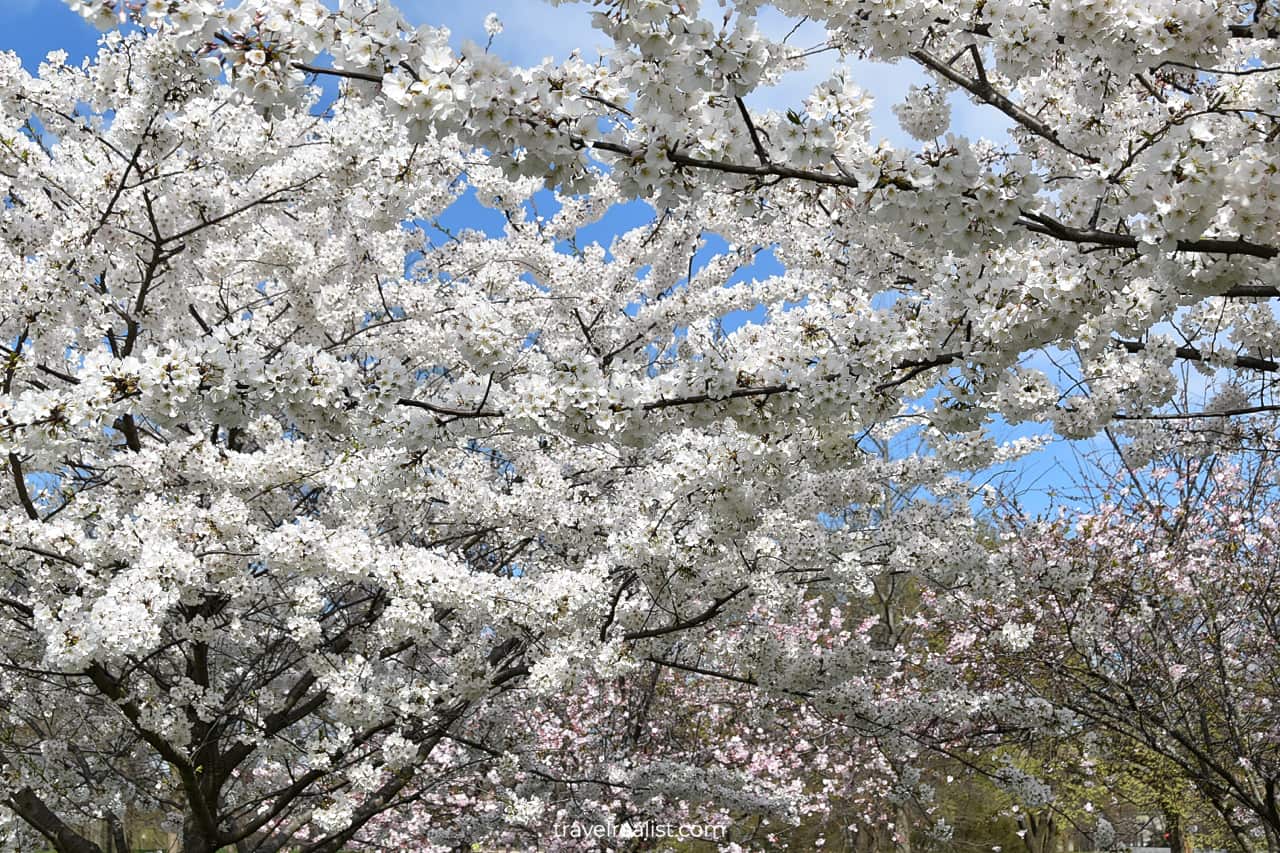
The answer is a small cherry tree grove near the German-American Friendship Garden. It is just south of Constitution Avenue. This grove has a different variety of cherry trees than the ones at the Tidal Basin.
There is another reason to visit the Washington Monument during the National Cherry Blossom Festival. The Blossom Kite Festival takes place there, too. Fiery kites are a good addition to the blooming cherries.
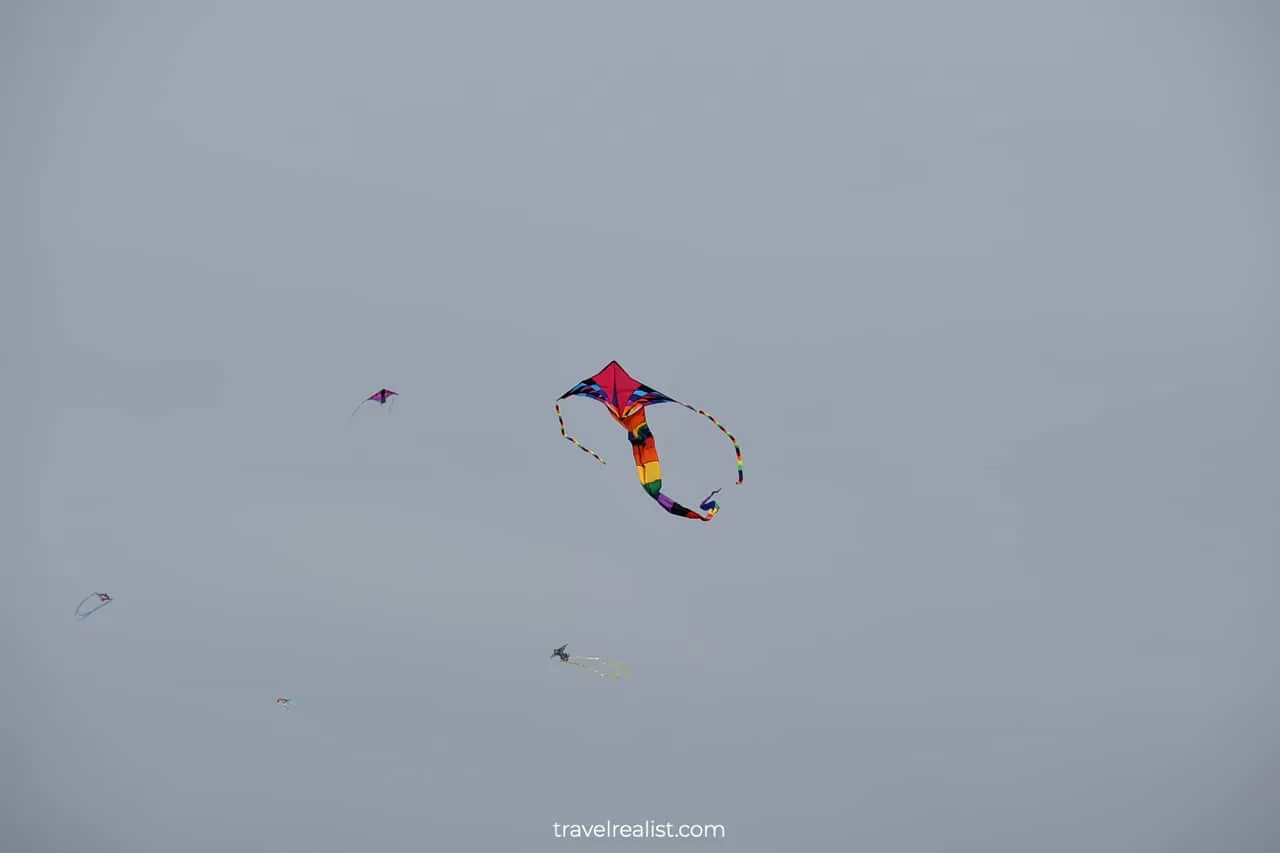
Cherry blossom is a good time to visit the top of the Washington Monument. You could see all cherry blossom spots near the National Mall from the above. Reserve your free ticket as soon as booking opens.
The observation deck, Blossom Kite Festival, and a cherry grove might not be enough to convince some visitors. In this case, skip this area completely in favor of other cherry blossom spots in Washington, D.C.
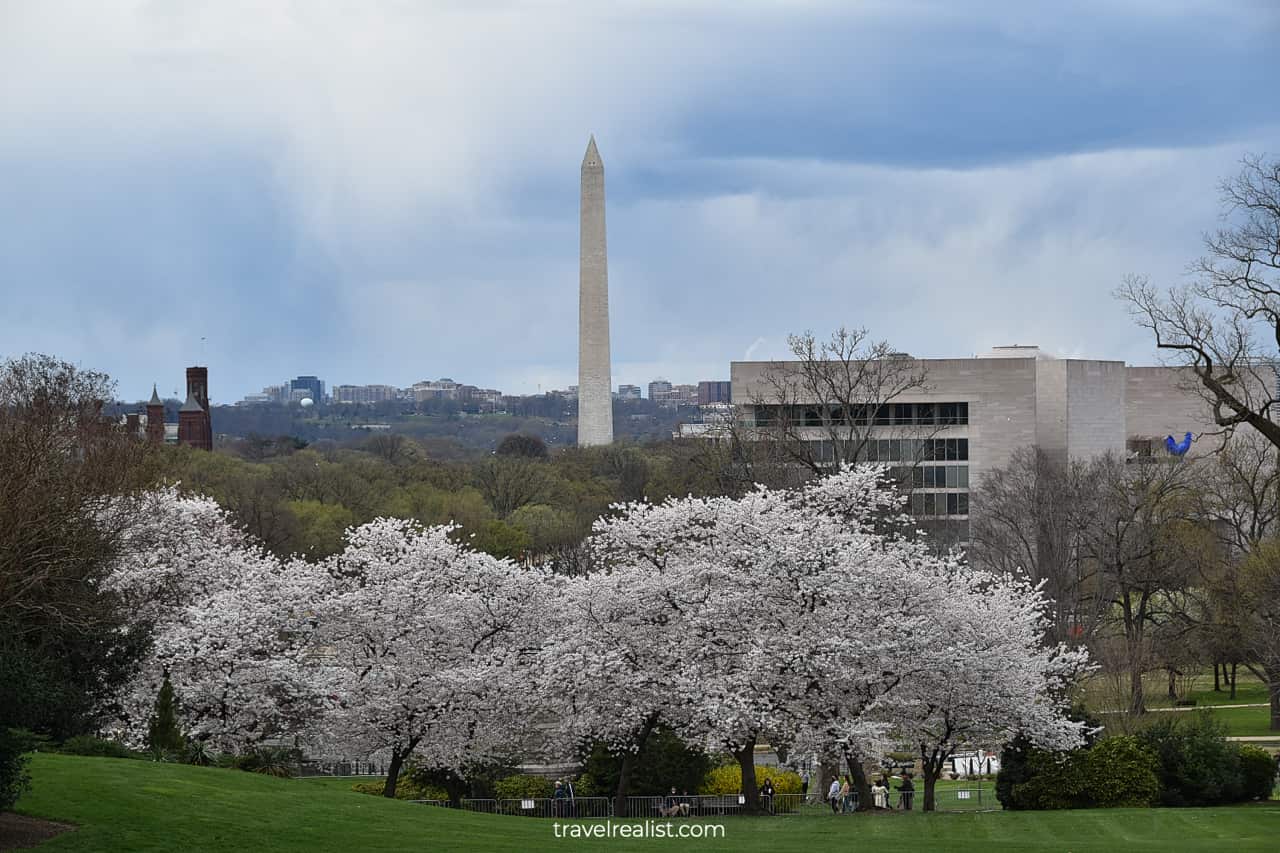
8. Bartholdi Fountain and Gardens
Most of the Mall has few cherry blossom trees. There might not be a single tree between the Washington Monument and the United States Capitol. But it does not mean that you should wrap up your visit.
There are a few more spots with cherry trees around the U.S. Capitol. You just need to walk for about 40 minutes to get there. Make a stop at Bartholdi Fountain and Gardens to take a break from walking.
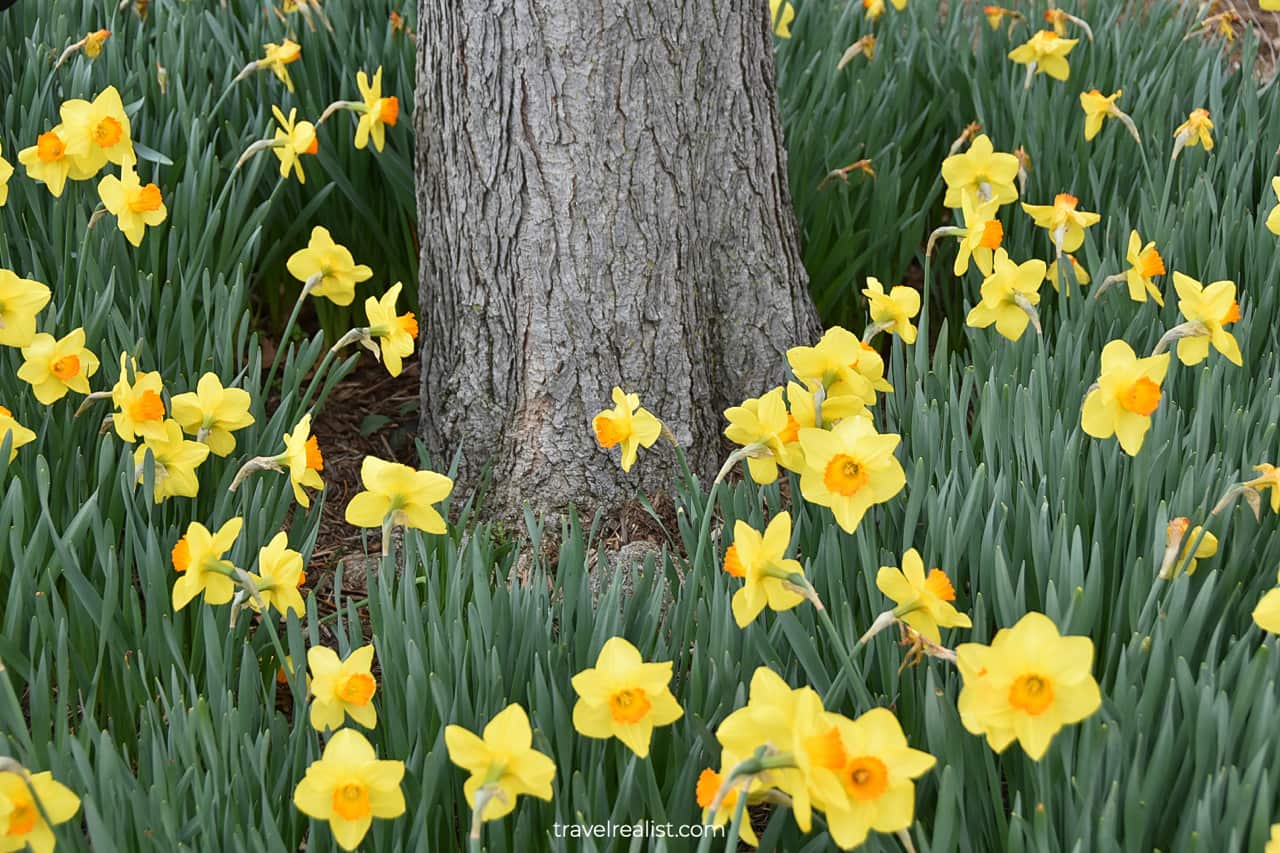
It is part of the United States Botanic Garden across the street. There are no Japanese cherry trees in this garden. But you could see a lot of blooming spring flowers like at New Jersey Botanical Garden.
Tulips and daffodils will be the main flowers in the garden. You could wander the pathways or just sit on a bench enjoying the views.
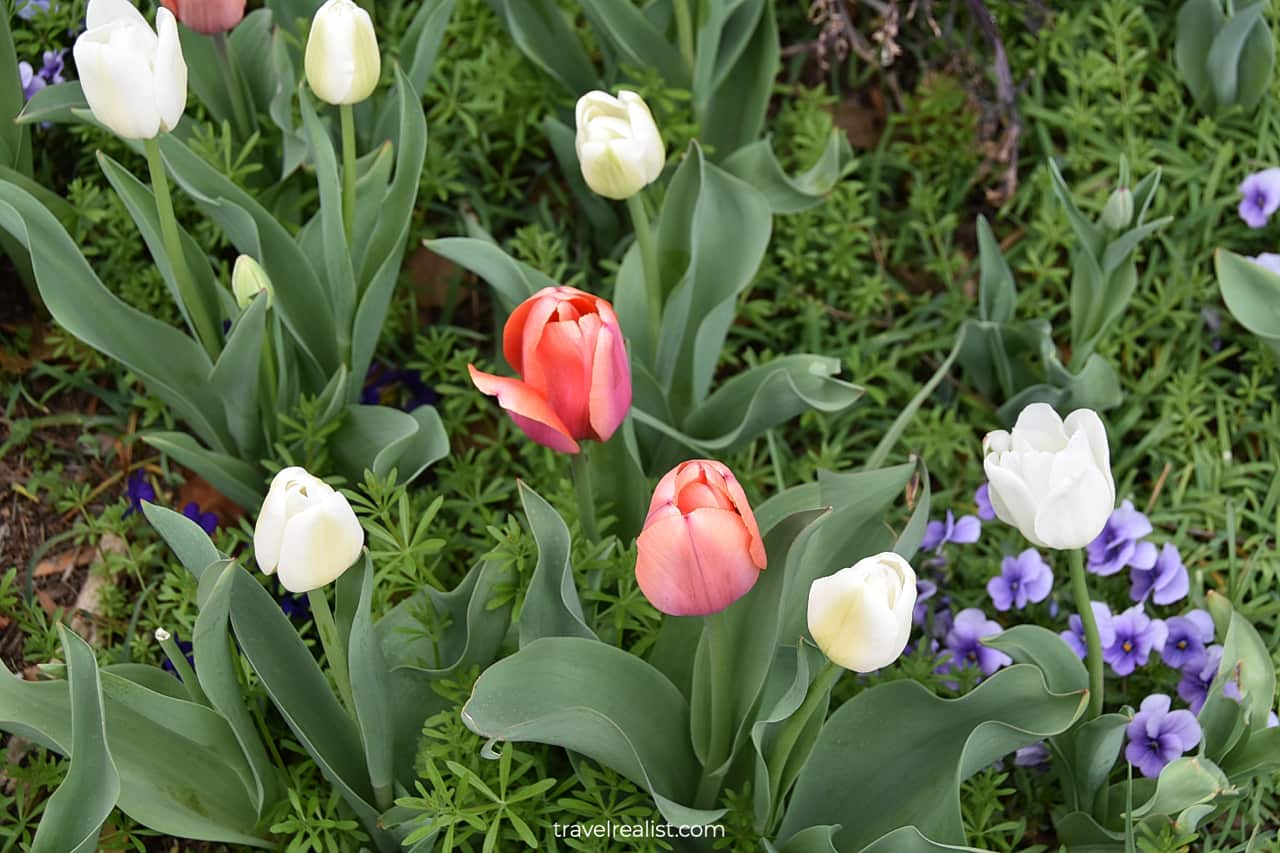
Most flowers surround the tree trunks. Colorful flowers with lush green stems and leaves look very different than the leafless branches. They remind you that the spring is coming soon.
Bartholdi Fountain and Gardens are just two blocks southwest of the U.S. Capitol. Get ready for the final stretch before a new spot with cherry blossom trees in Washington, D.C.
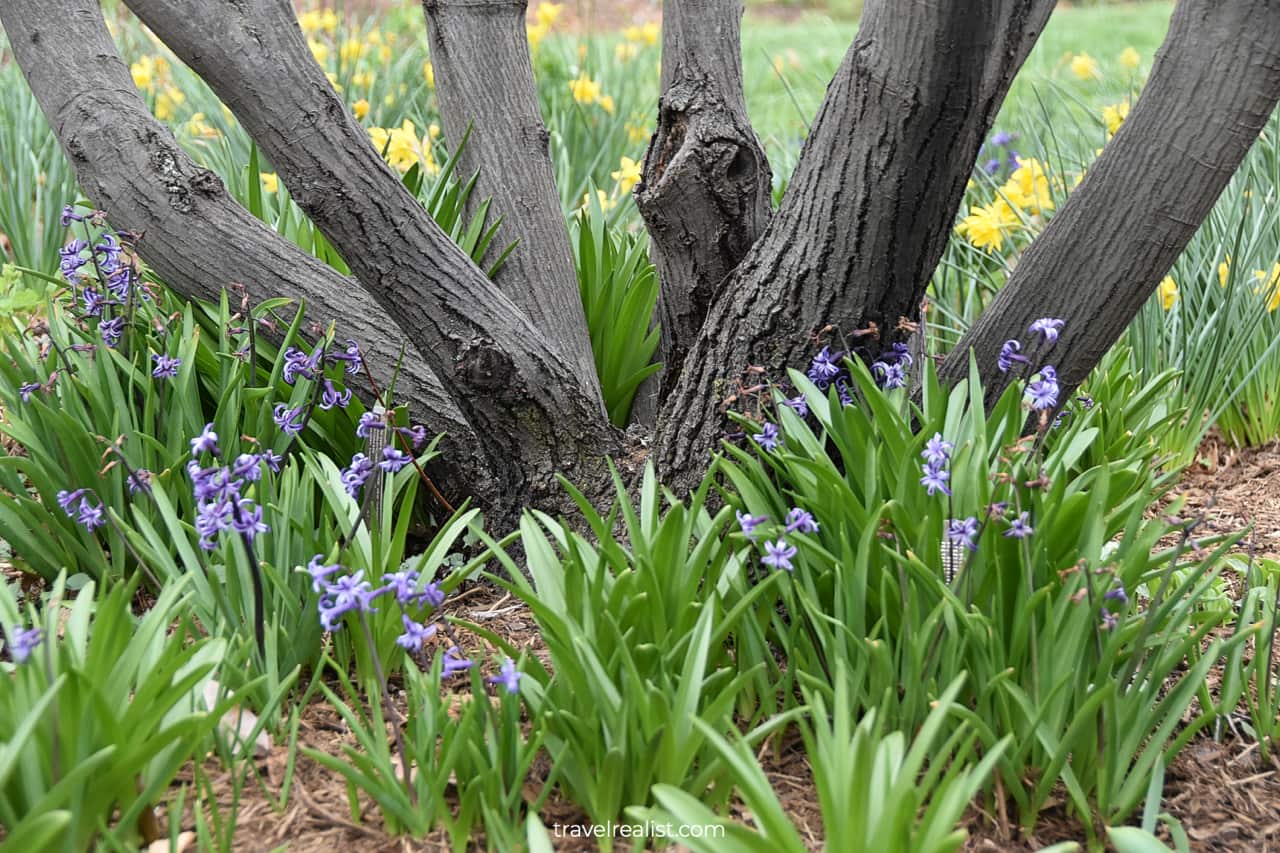
9. United States Capitol
The United States Capitol grounds are another great spot to see cherry blossom in Washington, D.C. The U.S. Capitol is a breath of fresh air in the largely cherry free National Mall.
Cherry trees grow on the western side of the grounds. The trees near Northwest Drive look similar to the variety at the Tidal Basin.
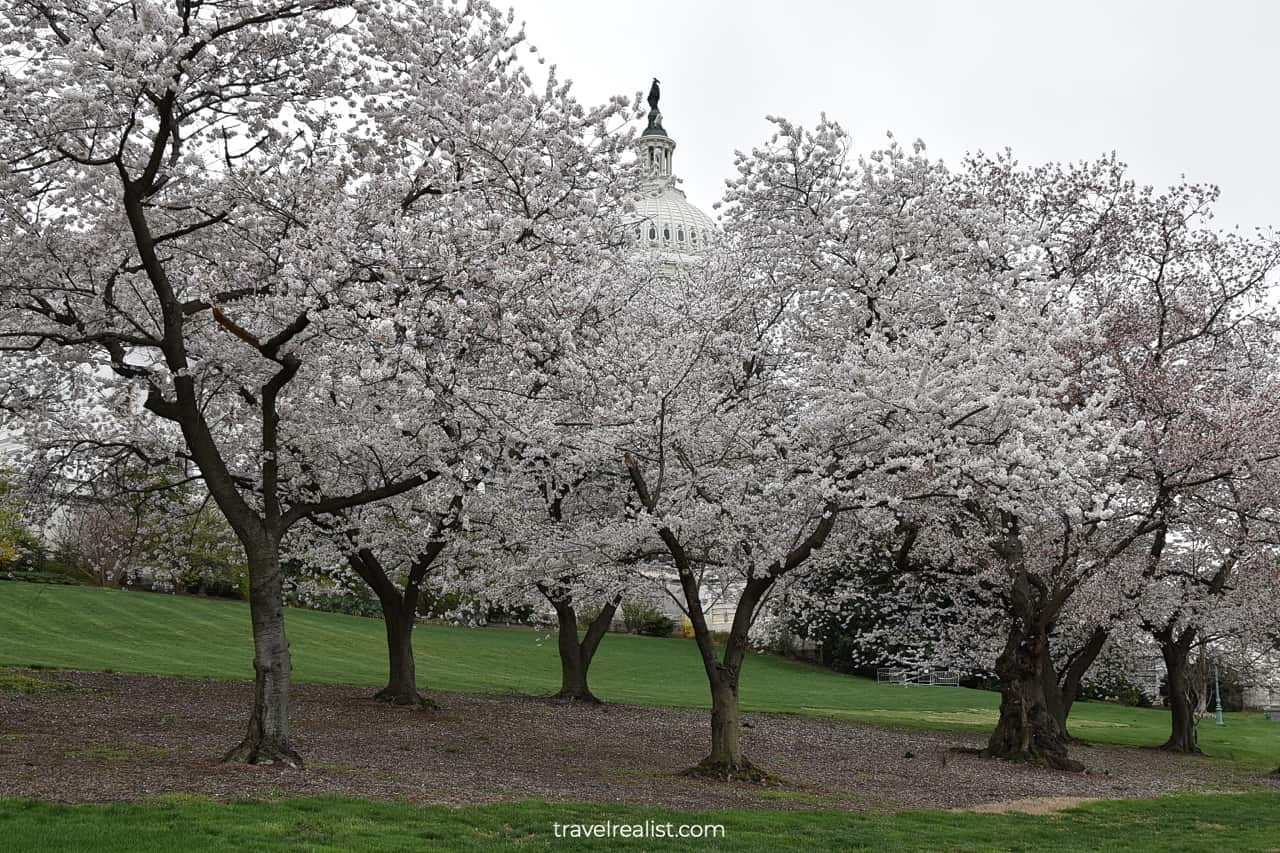
But the United States Capitol has a few unique trees. Head to the area along Southwest Drive. It is home to a few cucumber tree magnolias. These older trees have curved trunks.
Cucumber tree magnolias could grow for up to 120 years. It is between three and eight life spans of an average Japanese cherry tree.
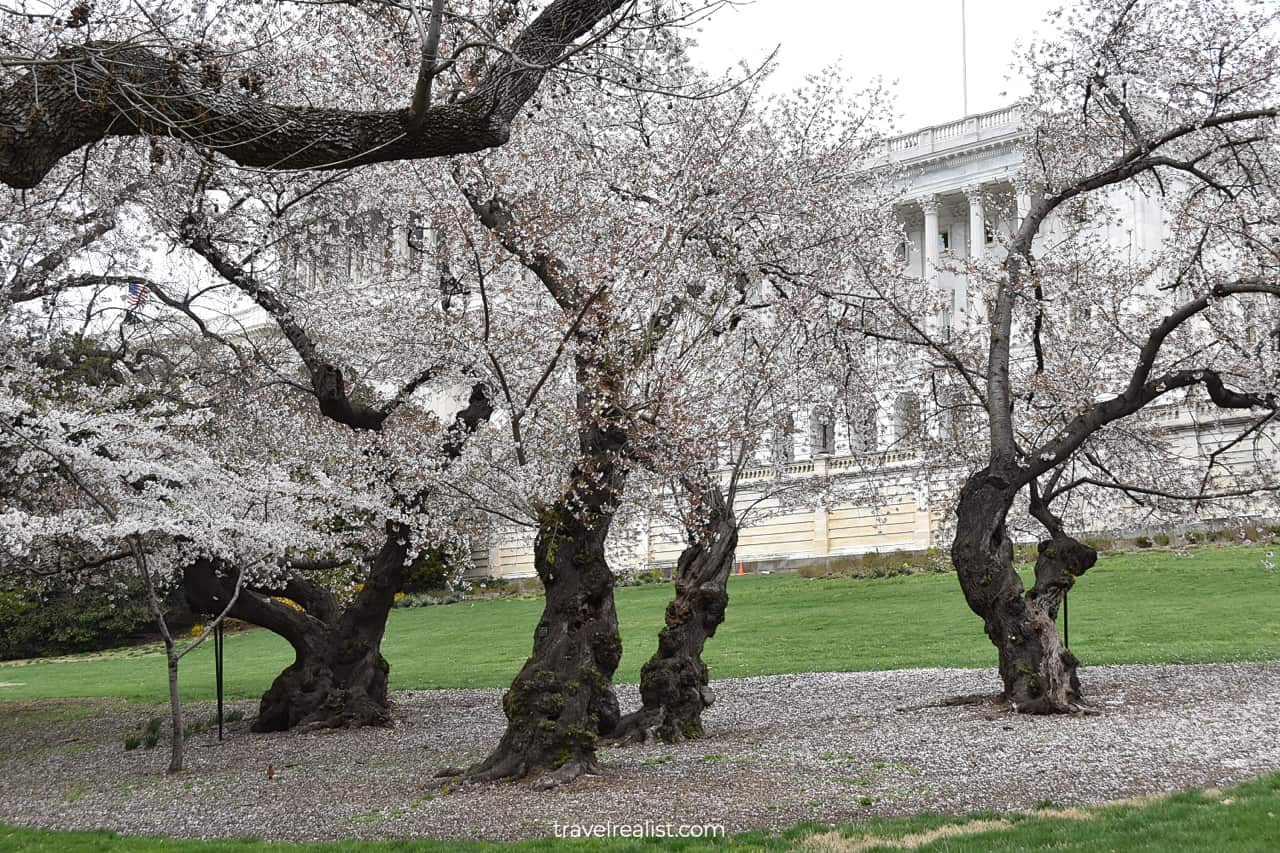
You might expect more cherry trees on the U.S. Capitol grounds. In the end, you did not just walk for 40 minutes to see a dozen of cherry blossom trees.
Get ready for a disappointment in this case. There are a lot of different blooming scrubs and trees on the grounds. But there are no other cherry trees around the building.
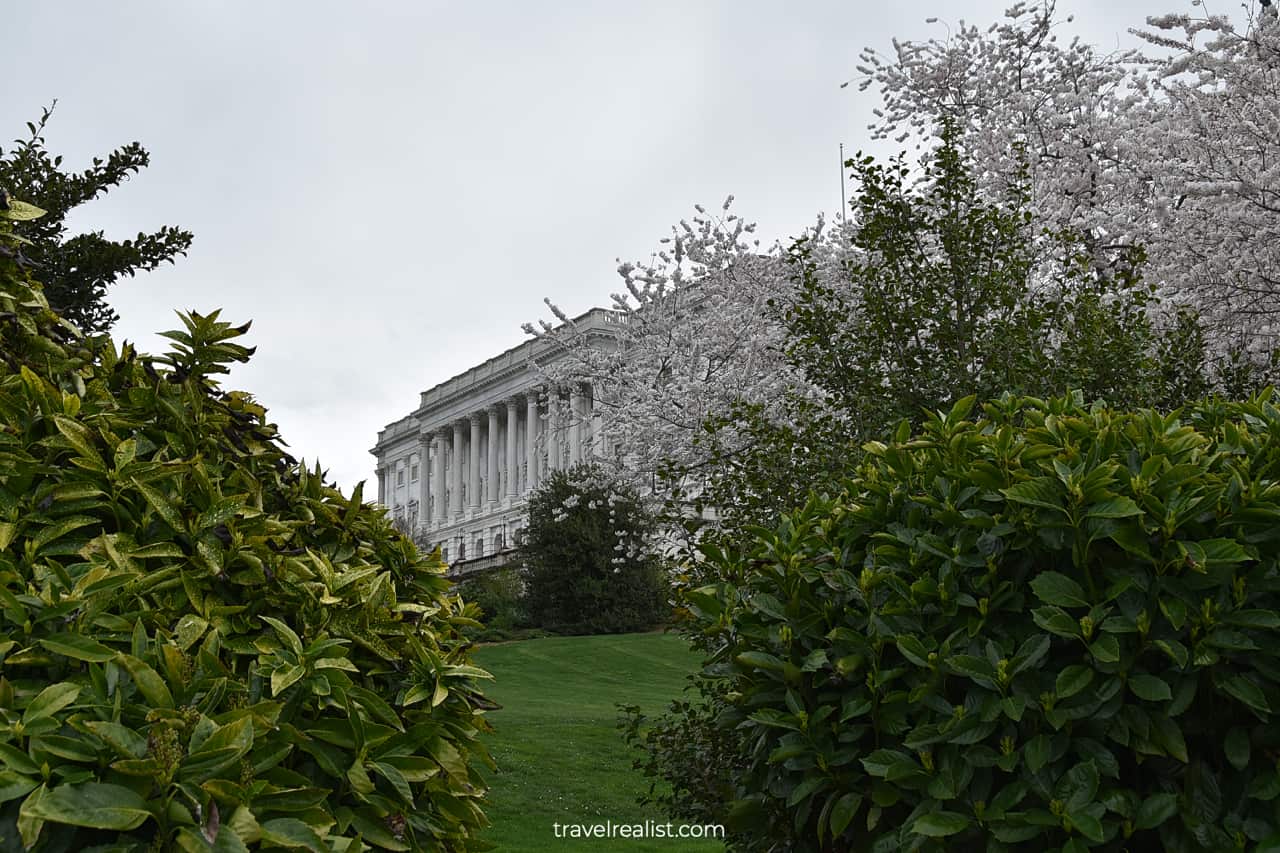
10. Library of Congress
You should not stop your quest for cherry blossom spots in Washington, D.C. with the U.S. Capitol. If you already made it that far east, you could find a couple of places nearby.
Go to the Library of Congress first. The number of cherry trees near the Thomas Jefferson Building will not turn any heads. But you could get a nice picture with one of the prettiest buildings on Capitol Hill.
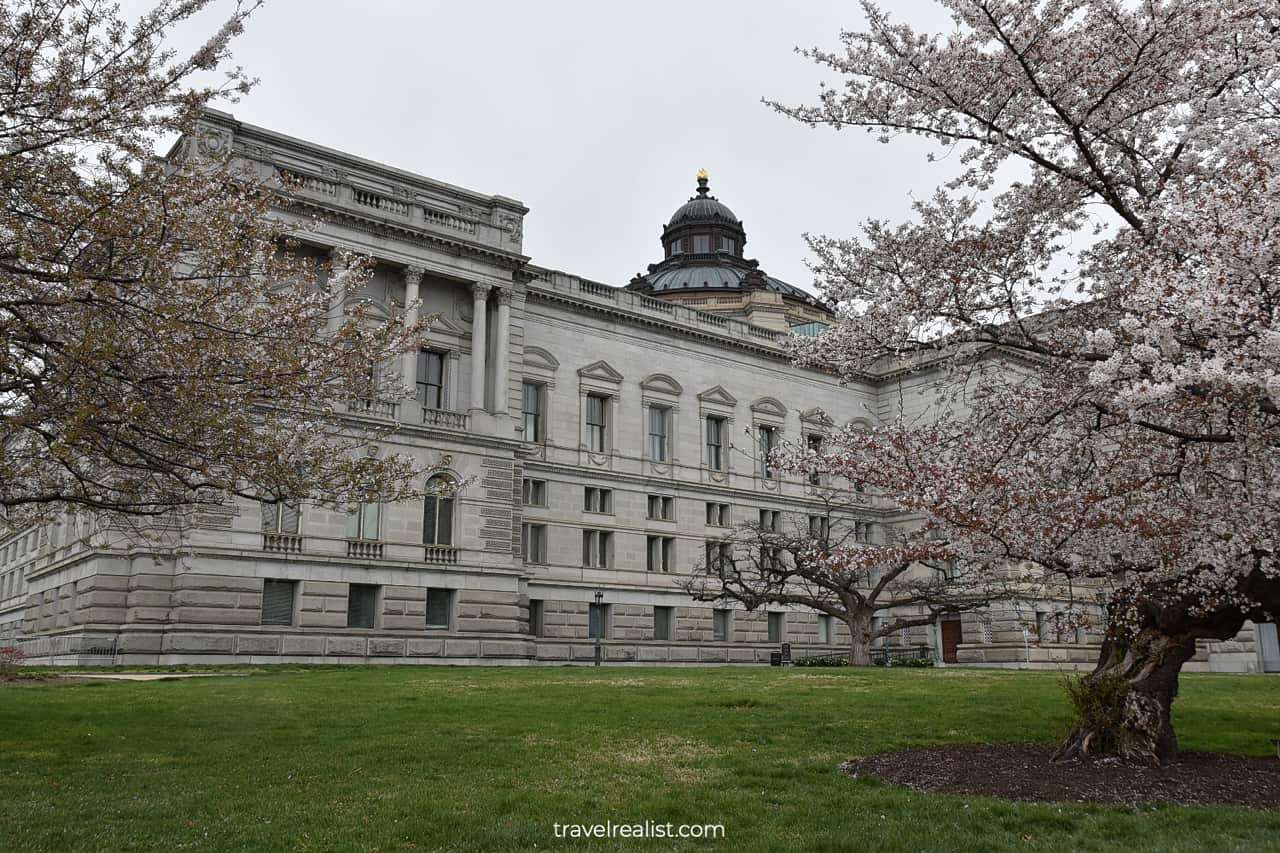
11. Supreme Court
Head north across the street. There are a couple of cherry trees at the intersection of First St and East Capitol Street. These trees are next to the Supreme Court of the United States.
Blooming cherries liven up the mood around this Neoclassical building. They give the Supreme Court a different look and feel.
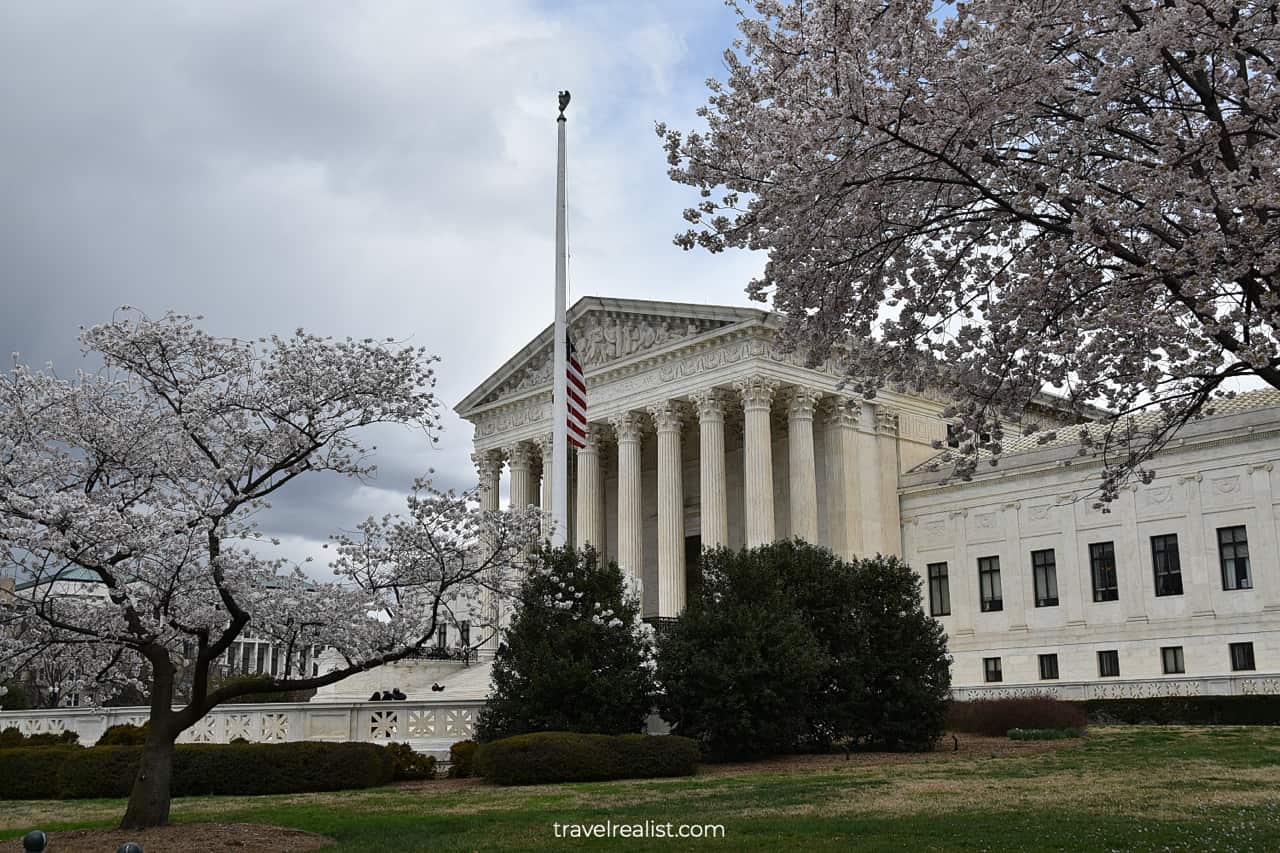
12. Lower Senate Park
There is a reason to linger on Capitol Hill when searching for the top cherry blossom spots in Washington, D.C. There is a park with lots of cherry trees next to the U.S. Capitol and the Supreme Court.
Lower Senate Park is between Constitution Avenue and Union Station. It is a lesser known spot to enjoy cherry blossom in Washington, D.C.
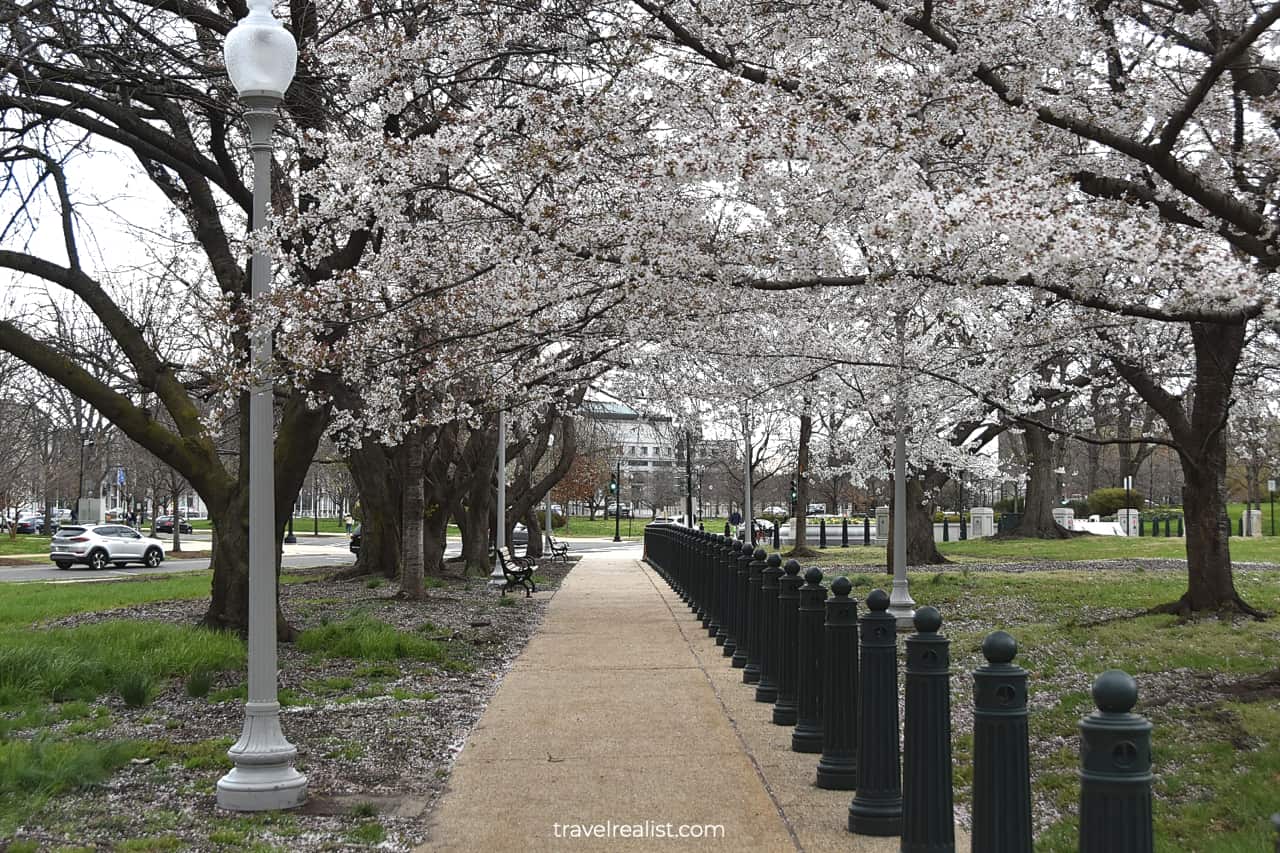
This park could rival the groves at the U.S. Capitol grounds and near the White House. Yet, it will have just a fraction of the Tidal Basin and National Mall crowds.
This is true even during the National Cherry Blossom Festival. Few other people would make their way through the park during your visit. You could enjoy cherry blossom alone or with your loved ones.
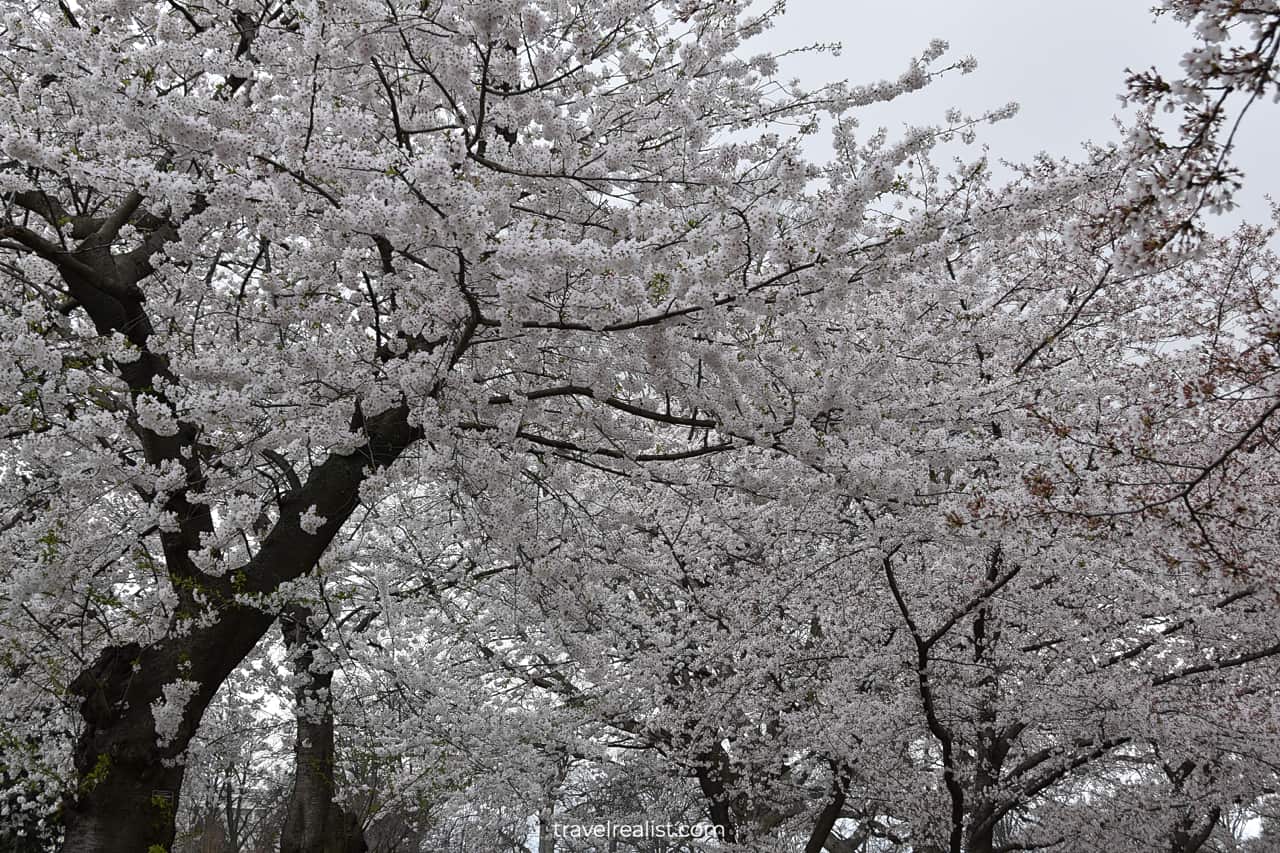
Continue with this Cherry Blossom Spots DC Guide. You will learn more about ways to get to the sights, entrance requirements, and places to stay.
Getting to Cherry Blossom Spots in D.C.
Most cherry blossom spots in Washington, D.C. are near the National Mall. As a result, you could reach them by traveling to the main National Mall sights.
Subway, or Metrorail, will be the most convenient option for most travelers. You could exit at Smithsonian (Blue, Grey, Orange lines) or L’Enfant Plaza (same plus Yellow and Green lines).
A subway ride costs $2 on the weekend. A weekday fare differs based on your travel distance. A one way ride could reach $6 at most. It might still be cheaper than parking near the National Mall.
Driving to the cherry blossom spots might not be a good idea. There is hardly any affordable parking near the Tidal Basin. Book your parking spot in advance if you still choose to drive.
Cherry blossom is a busy time to travel to Washington, D.C. from other states. Most airlines will gladly take your hard earned dollars in exchange for rather expensive tickets to D.C.
Try flying to Ronald Reagan National (DCA) airport. It is much closer to the cherry blossom spots than Dulles (IAD) and Baltimore-Washington (BWI). But keep an eye on BWI if you are looking to save.
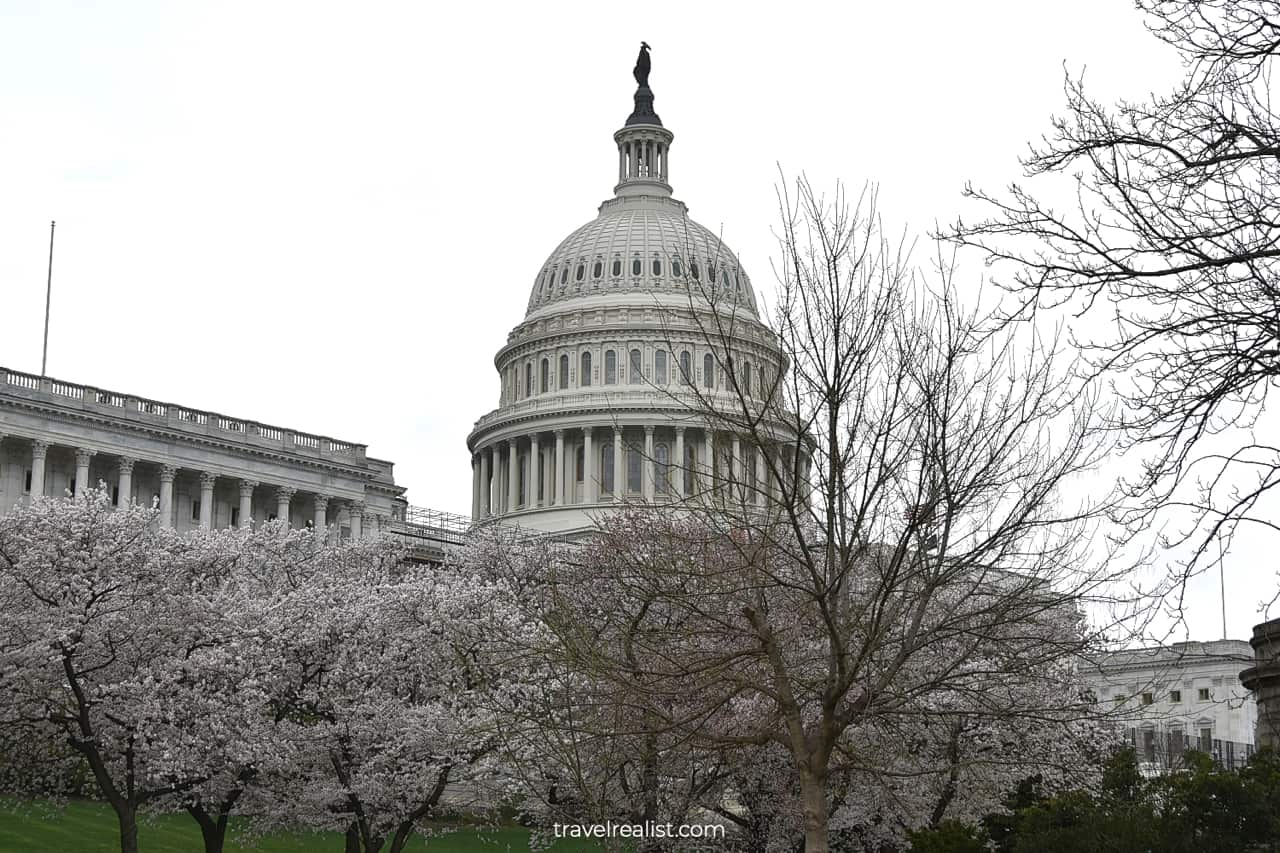
Where to Stay near Cherry Blossom Spots
Cherry Blossom is an eventful time in Washington, D.C. Thanks to the National Cherry Blossom Festival, hundreds of thousands of visitors travel to the capital to see cherry blossom.
It is one of the most expensive times to visit Washington, D.C. Airfare increases are only part of the equation. Higher price per night makes a search for a place to stay a stressful activity.
In a perfect world, you would want to stay as close to the Tidal Basin as possible. This way, you could be there at dawn without having to travel from another part of the city.
But the reality is quite different. Places to stay near the Tidal Basin become too expensive during cherry blossom. You have to stay further away from the cherry blossom spots in D.C. to not break the bank.
State Plaza Hotel and Hotel Hive are good but pricey to consider in Foggy Bottom neighborhood. They are over 30 minutes north from the Tidal Basin.
Take a look at Residence Inn Arlington Capital View and Homewood Suites By Hilton Arlington Rosslyn Key Bridge. These solid places to stay are a subway ride away from the cherry blossom spots.
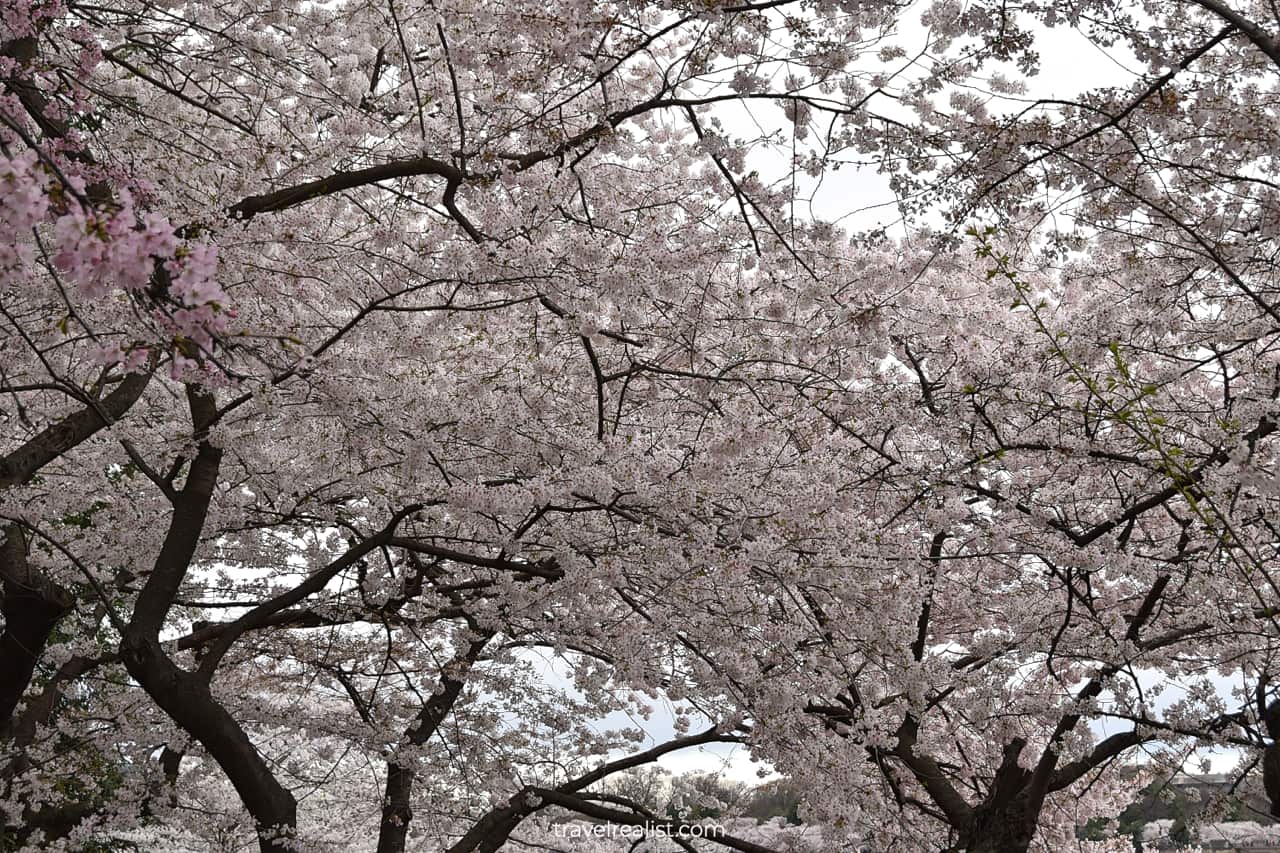
Entrance Requirements & Passes
The National Cherry Blossom Festival is a free celebration. You could visit the top cherry blossom spots in Washington, D.C. 24 hours a day 7 days a week.
It is a good idea to check the Cherry Blossom Cam. This camera broadcasts a live feed from the Tidal Basin in Washington, D.C. You could always get the latest view of its cherry blossom trees.
Japanese cherry trees are the main attraction of the festival. But there are also a handful of other events. Most of them are open to the public and do not have admission fees.
There is one notable exception, the National Cherry Blossom Festival Parade. The parade takes place between 10 a.m. and 12 p.m. on a Saturday before the last day of the Festival.
Similar to the St. Patrick’s Festival Parade in Dublin, Ireland, you could reserve seats. You could still see the parade from a crowd without a ticket. The Parade has little do with the cherry blossom viewing spots.
Most cherry trees would be past their blooming peak by mid April. Unless you enjoy marching bands, performers, and massive displays, you could just skip it.
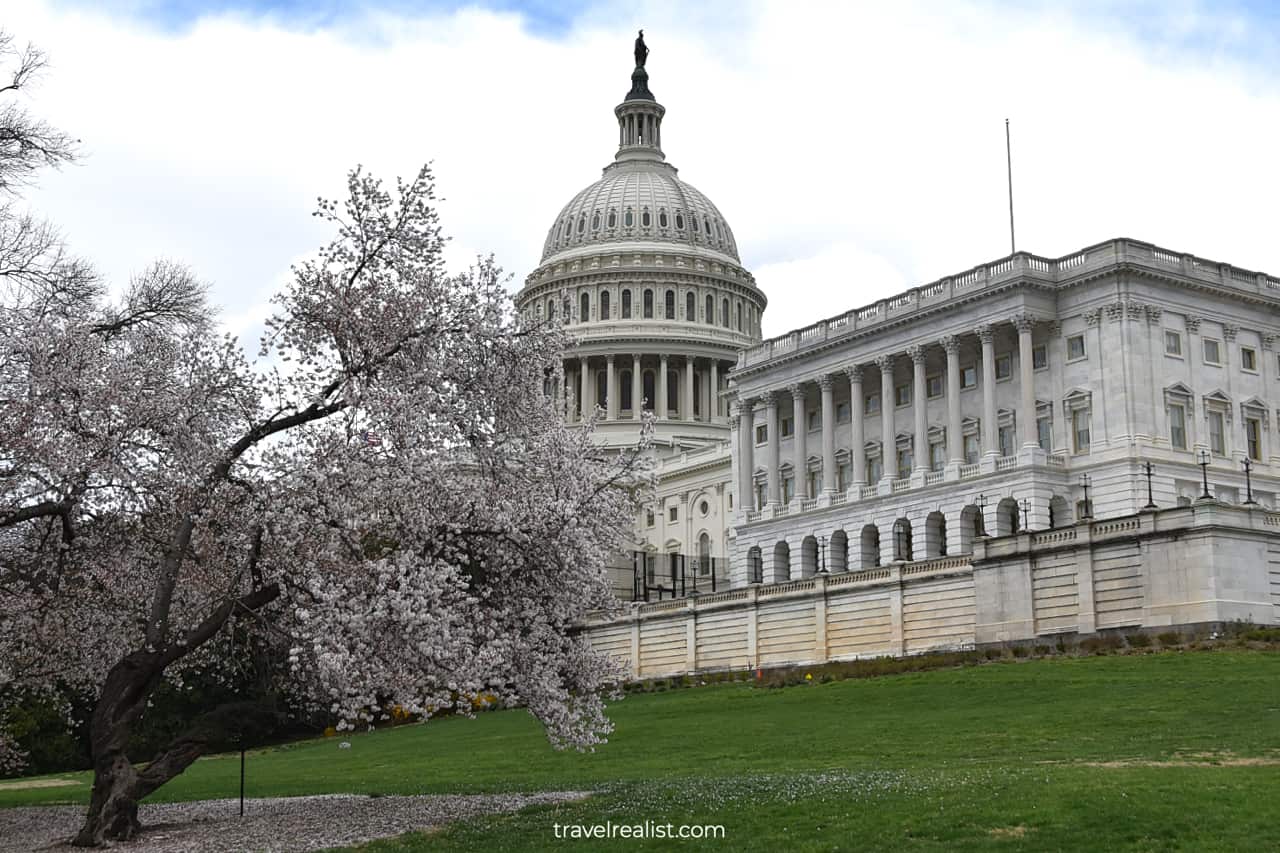
Takeaways: Cherry Blossom Spots in Washington, D.C.
Cherry blossom is a beautiful time in Washington, D.C. Japanese cherry trees in the city start to bloom sometime between mid March and mid April. A handful of spots in D.C. become live exhibits.
A lot of people come to the capital to get pictures with pink and white blossoms in the background. The Tidal Basin and the United States Capitol attract even more visitors than usual.
Higher prices on airfare and places to stay seem to do little to deter visitors. The beauty of the cherry blossom trees appears to be more powerful than money.
The closer cherry blossom is to its peak, the bigger the crowds would be at the Tidal Basin. You might find yourself walking in a sea of people around March 27th.
It is hard to recommend cherry blossom as a time to visit Washington, D.C. You will overpay on almost everything. Yet, the story is different if you find a great deal on flights and places to stay.
In this case, head to the Tidal Basin as early as possible. You would want to be one of the first people of the day near the Japanese Pagoda.
Once you got beautiful cherry blossom pictures without crowds, head to the U.S. Capitol. You could finish your cherry blossom trip in Lower Senate Park.
Take a look at this Cherry Blossom Spots DC Video Guide. And visit the YouTube channel for the latest videos.
Frequently Asked Questions
There are a handful of spots to see cherry blossom in Washington, D.C.
– You should walk around the Tidal Basin for the best views of Japanese cherry trees.
– Head to the Washington Monument grounds and the White House next.
– Explore the groves on the United States Capitol grounds.
– Finish your cherry blossom exploration in Lower Senate Park.
The Tidal Basin, White House, U.S. Capitol, and Lower Senate Park are the best spots to see cherry blossom in D.C.
You could find cherry blossom trees throughout the capital. But most Japanese sakura trees are at the Tidal Basin. A much smaller number of trees is near the White House and the U.S. Capitol.
You could also see a few cherry trees in Lower Senate Park.
The National Cherry Blossom Festival takes place in Washington, D.C. between mid March and mid April. The dates of the Festival differ slightly each year.
Cherry blossom season in Washington, D.C. takes place between mid March and early April. The peak cherry blossom in the city differs by year. It depends on winter and spring weather conditions.
You need to stay as close as possible to the Tidal Basin without breaking the bank. Hotel Hive and State Plaza Hotel are good options if the price is right.
Most places to stay increase prices during the National Cherry Blossom Festival. It could be cheaper to stay in Virginia and take a subway ride to the city.
Safe realist travels!

